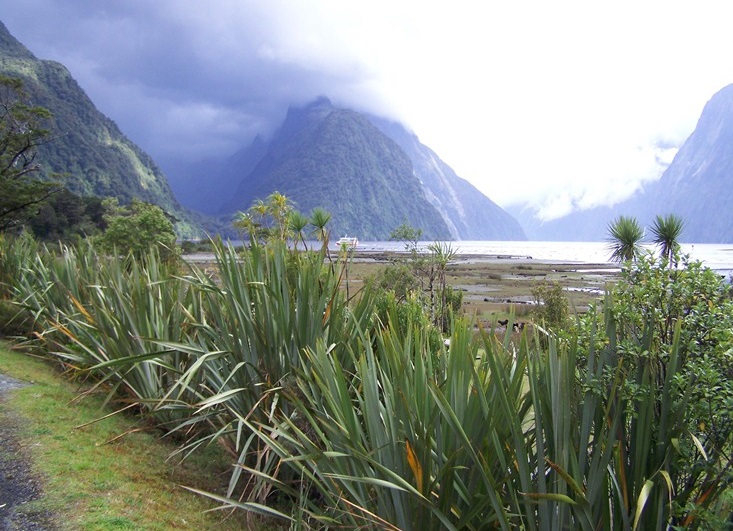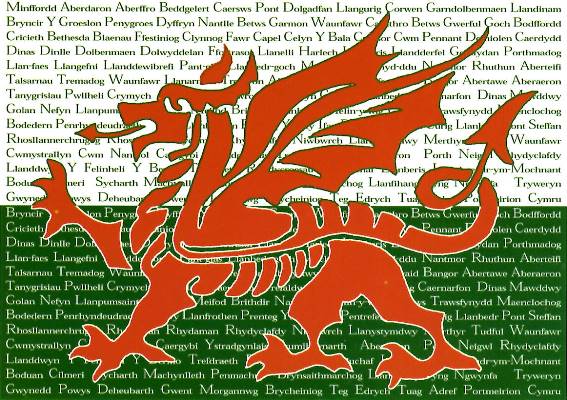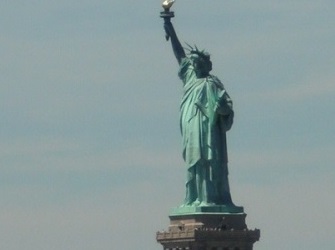Scotland 2022
VK4ION
Visiting Scotland
It's 2022, restrictions lift... I'm off
This trip was originally booked for March 2020 but a plague closed
our borders and the minute they opened, I was off!
Thanks to wonderful QANTAS my flight credit was secure and even my
accommodation in Edinburgh was covered.
After 2 years of lockdowns I felt the stress of my lost freedom and
was watching the UK & AU border restrictions change and lift so I
could leave (and more importantly return home) without quarantine.
The paperwork was excessive and stressful so it was slow going at
airports as people didn't have their docs in order. I just clutched
my digital device & paper backups believing it would all work
out.
The short story is, I went, I traversed Scotland (visited York,
returned to London) and got home safely, without a sniffle or a
Corona in sight.

Wheels Down Heathrow Then onto a train
London to Edinburgh
After 21 hours in the air, what's another 4-hour train trip. It seems strange to be so excited about an overseas trip
Getting there
Getting started
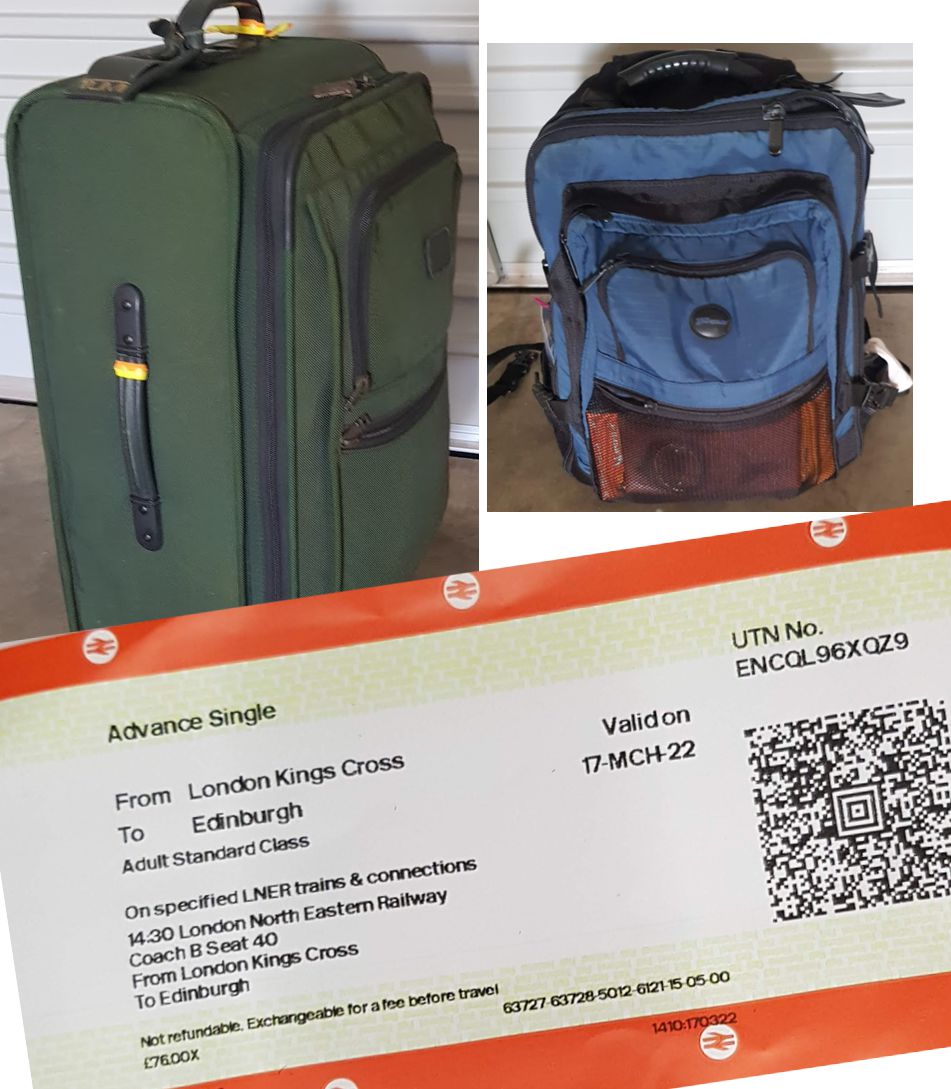
I travel light; I check that small roller bag [11kg] & carry a
backpack.
Heathrow was a bit shambolic and left us sitting out on the
runway for over an hour... no available terminal gate... hmmm
perhaps they didn't know we were coming.. **surprise**
The luggage carousel broke down and that was another hour
standing with very tired, hot and smelly people.
Finally made good my escape, took a swift Heathrow Express train
from Terminal 3 into Paddington Station, then an underground
train over to Kings Cross Station.
Got a seat on an LNER express train to Edinburgh and I'm away.
That's 40 hours travel when I factor in the drive time to get to
Brisbane international airport.
My fabulous hotel in Edinburgh, The House of Gods was waiting
for me and honoured a credit from 2 years ago which was so
impressive when you consider how much they'd suffered over the
previous 2 years.
House of Gods
My Edinburgh hotel
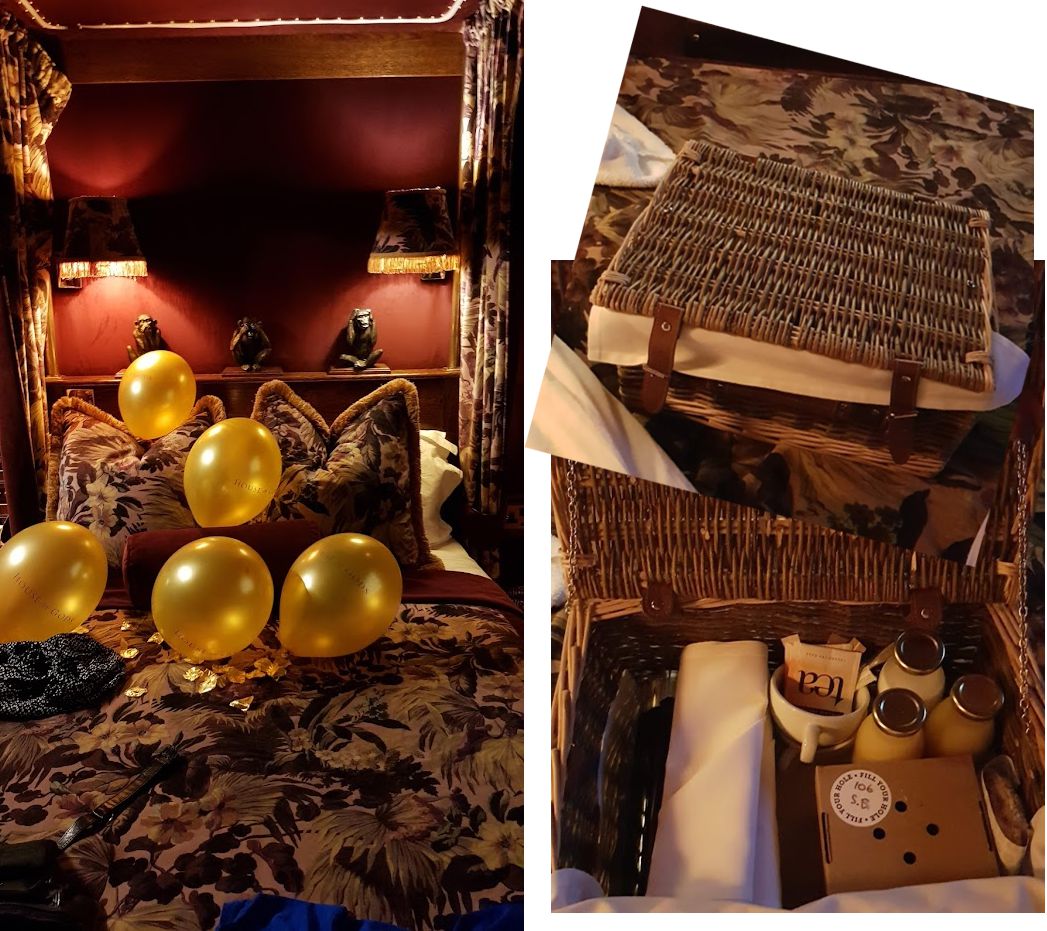
The House of Gods on Cowgate in the Old City is a must-stay
destination and I felt like I was in a pirate den!
The room was strewn with golden balloons and gold leaf.
The bed, a curtained 4-poster, and simply the best I've ever
experienced at a hotel, and my breakfast arrived in a wicker
basket.
They give you free wine, delivered to your room by your butler
as well as a bar voucher for cocktails... you must try the
champagne & mint, so delicious.
You text them or press a button in your room and the butler
magically arrives with whatever you want... yes, it's only room
service but they do it in style and it's fun.
But I can't lay about here, I have sights to see and things to
explore, as old Edinburgh awaits.
Edinburgh
It doesn't seem very Scottish
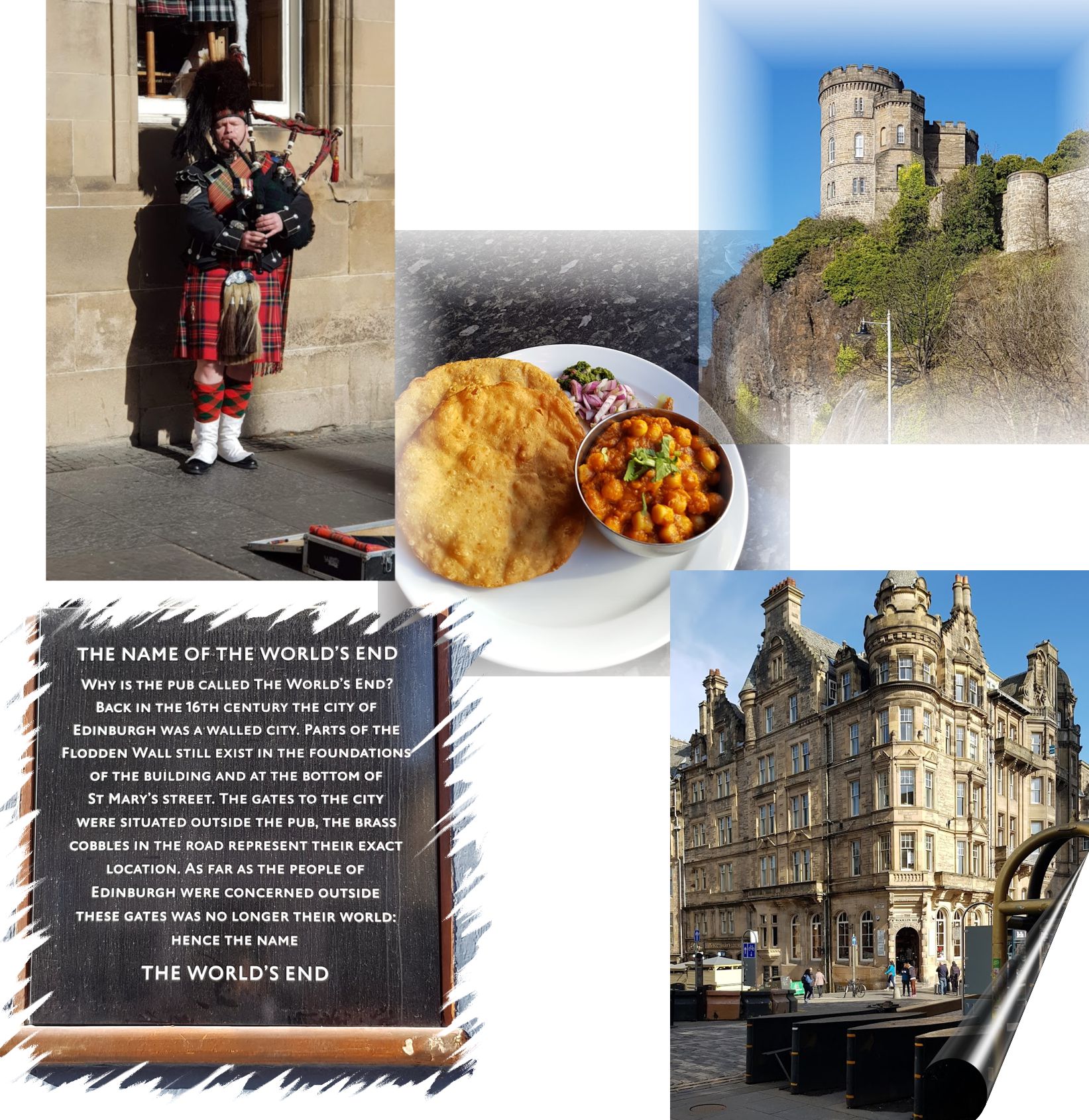
Cosmopolitan is the word, I'm surrounded by old buildings,
serendated by bagpipes while I eat great Indian food from
Treacle on High Street.
It's all a bit trippy with so many tourists and foreign
speakers, it was hard to hear a Scottish accent.
Edinburgh was a walled city and the plaque on the World's End
Pub explains that in the 1500's people rarely left the walled
enclosure and to pass out the gates was to leave their known
world.
It was only early Spring but already the city was filling up
with tourists which I set out to avoid by poking my head into
alley ways and odd places.
Lots of bars and cocktails seem to be 'the thing' at most
places. The food is very good food and seems to have a spicy
Indian influence, just what I like.
Look what you find...
when you poke your head into alleyways
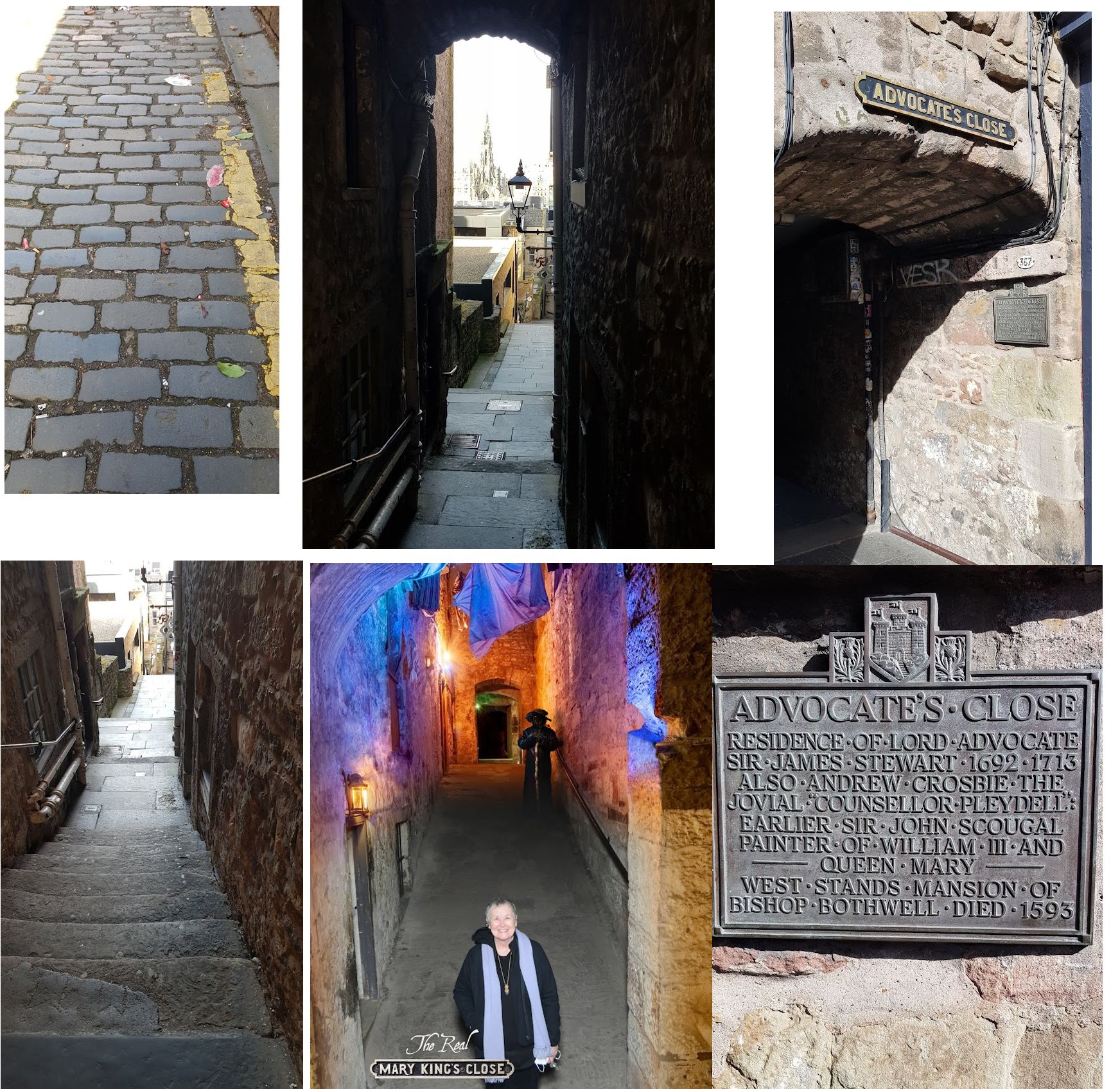
The quieter parts of the City are the alleyways under buildings
which go through to the next street and they are very old, some
with rough hewn steps.
You might wonder why the image of cobblestones... the roads are
almost all cobblestones and difficult to walk on. Barely two
stones are the same size or height and I could not imagine
anyone in heels being able to walk a city block.
It's rugged boots for me, so it's all fine, but just another
heads-up for trendy travellers.
The city is 'dirty' and I say that because it seems everyone
smokes, and the streets are heavilly littered with cigarette
butts & paper, which nobody seems to clean up.
Some of the narrow alleyways smell pretty bad, especially the
ones that have pokey pubs/bars. I'm guessing it's their patrons
who pee n puke in the alley... So be aware and walk faster to
avoid some stained and smelly alcoves.
Come to think of it, I never saw a street cleaner anywhere,
except back in London.
I did take one tour as I wanted to see what lay beneath the
streets. It was
The Real Mary Kins Close
Tour (not the street hawkers on the royal mile). They have
access to the old streets dating back to the 1500's & 1700's
that still exist under the current buildings.
That is one thing I noticed, throughout Scotland and York they
kept the solid foundations from what went before, so the
buildings are an historical record as they rise up on older
foundations. Pretty cool to see.
Edinburgh Castle is big & built on a rock
And full of busloads of tourists pushing and shoving
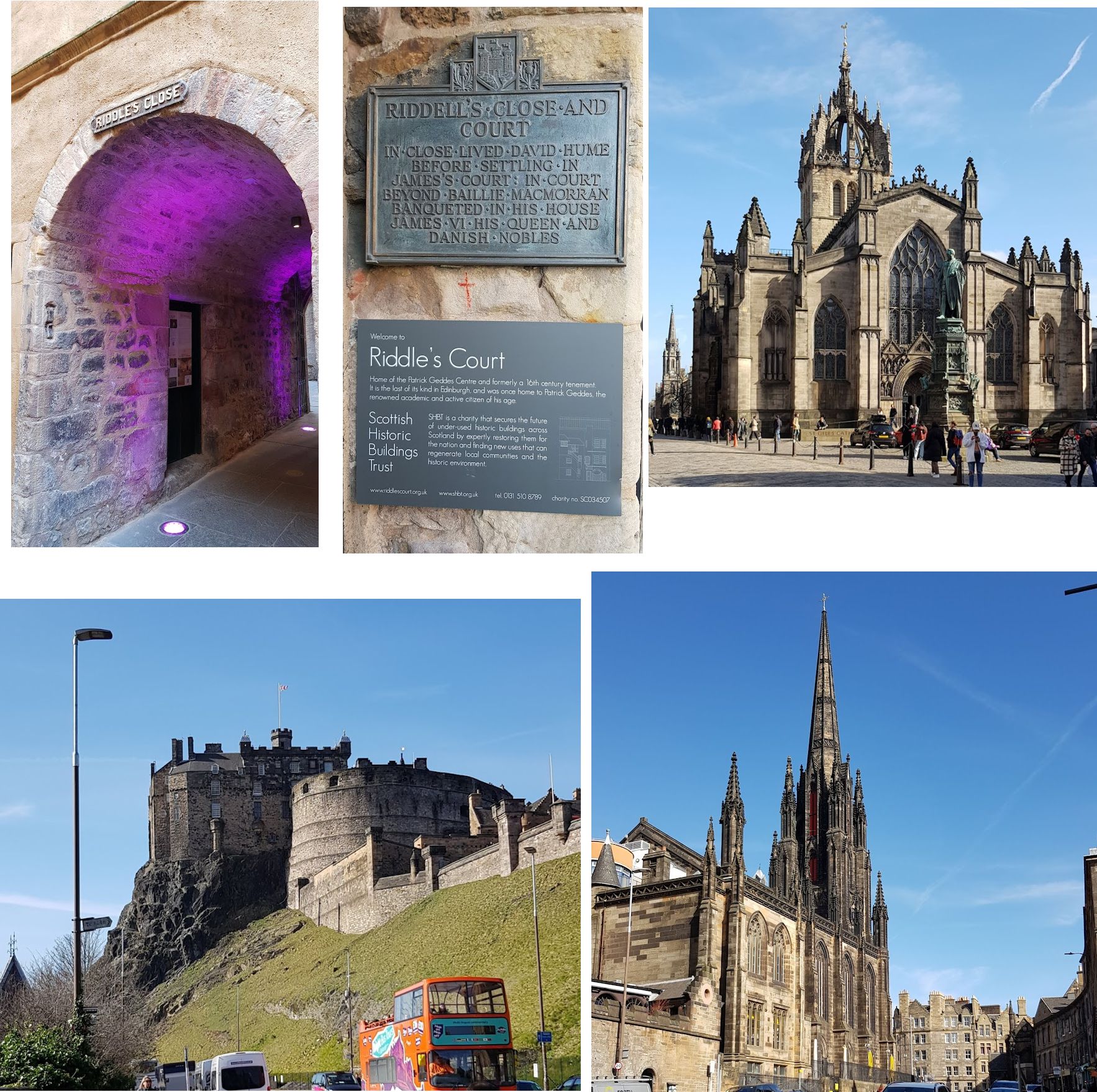
Look up and it is a beautiful city where they have preserved the
ancient architecture.
The old city is preserved and you can see how all the streets
and alleyways would have served the big castle on the hill.
History is also preserved in some of the Close (an alley is
called a Close), with descriptive plaques outlining who lived
there or what happened over time. The dates go so far back my
mind was boggled.
Edinburgh Castle is the big attraction of course, with lines of
coaches arriving all the time and the Royal Mile - a long
cobblestone street - is congested and little more than tourist
shops.
Not for me, I'm off to hire a car from and hit the road to see
the rest of Scotland.
Rental Car to escape
Looking for castles
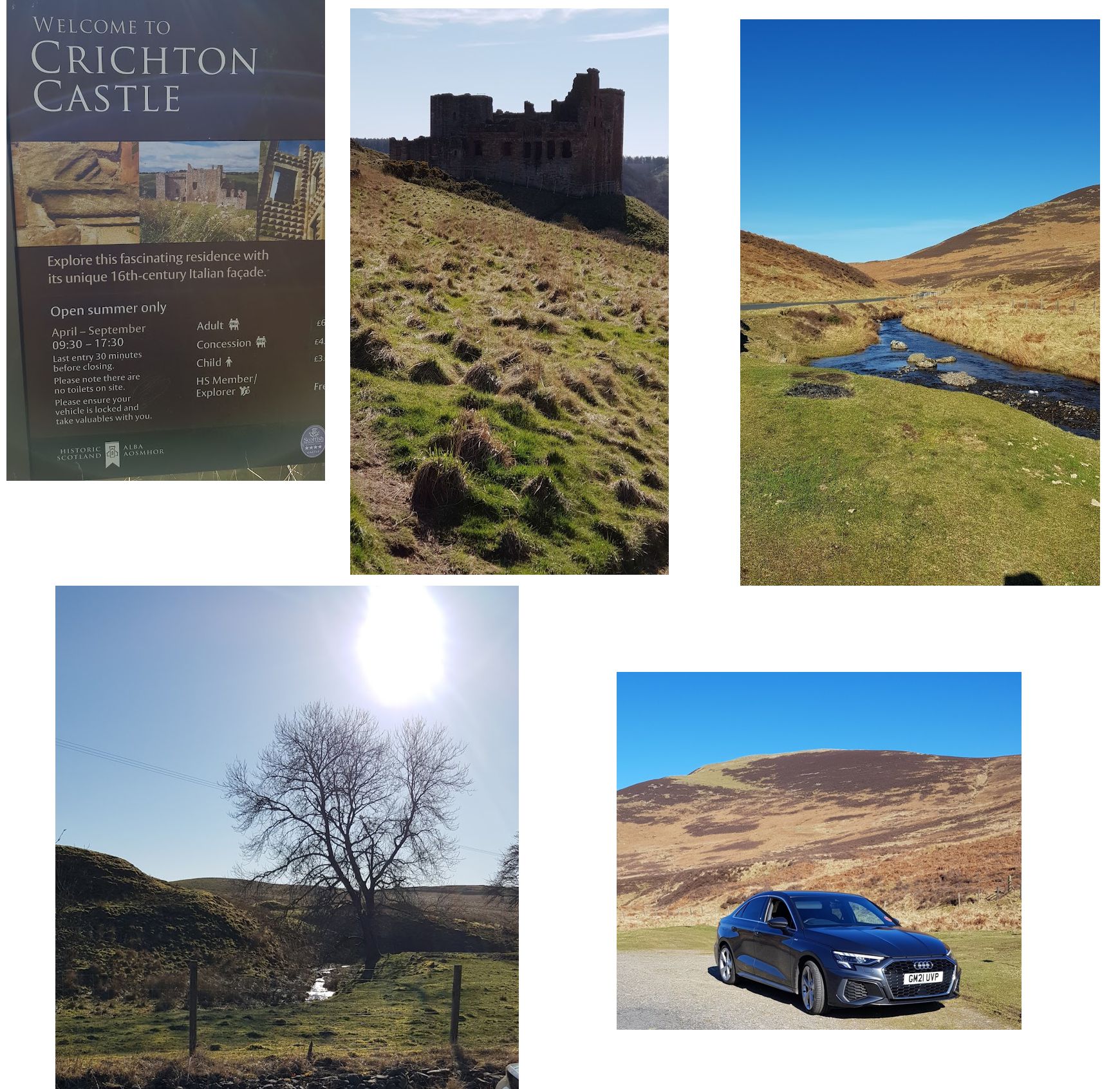
I rented an Audi from Sixt, oh and I must mention the price of
fuel... not complaining... just something that I noticed.
It can be dificult to know how expensive things are once you've
'exchanged' money but the ONE hour labour rule can help.
The UK minimum wage is about 5.50 pounds per hour, the price of
fuel was 1.70 per litre, so they can buy about 3 litres for
every hour they work.
In Australia the min wage is $20 and our fuel costs $1.50 (if it
hits $2 we're outraged!). So we can buy over 10 litres for every
hour we work.
The cost of living, fuel, electricity, gas was constantly in the
news and by calculating with my dumb method I could sympathise
with the working man or woman.
Here endeth the economics lesson but sometimes it helps to know
how things are for the places you visit.
Back to my trip
I'm heading South-ish from Edinburgh, wandering wherever the
roads take me, and sort of following the River Tyne.
Chrichton Castle is 14th century tower, now a ruin overlooking a
beautiful rolling valley, and not a tourist in sight.
Sadly the castle is crumbling from the ravages of wind and rain
over the centuries.
Amazing Historical Dates
Australia is soooo young by comparison
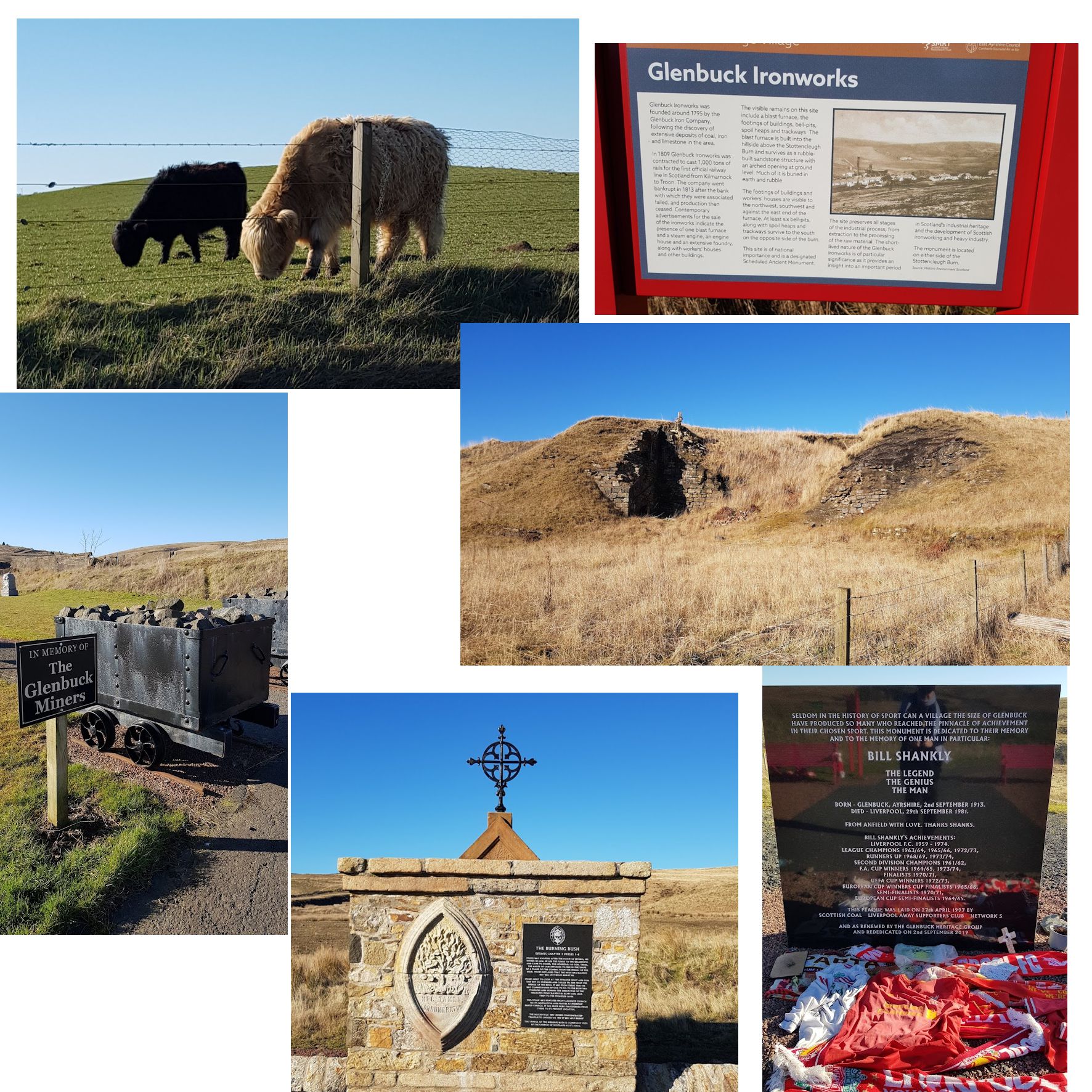
Glenbuck, worked for more than 200 years.
The luck of finding coal, iron and limestone in the same area
led to founding of the Glenbuck ironworks in 1795, and the old
blast furnace footings are still visible.
The ironworks failed but the Glenbuck miners took over the site
as a coal mine. It continued though, slowly declining in
production and importance over the years. The site remembers
those who worked in these mines right up to 2013.
The stone altar is preserving a bit of history from the old
Glenbuck village church. The stone has a low relief carving of
'the burning bush' and a modern inscription explaining the
history. The Latin text translates as 'Yet it was not burnt'.
Wandering around the site I also found a shrine to the
footballer Bill Shanky, who was born in the village of Glenbuck,
and played for Liverpool.
People have left simply hundreds of items at this memorial and
it's obviously a place of pilgrimage for Liverpool supporters
Love an old Church
Did I take a wrong turn?
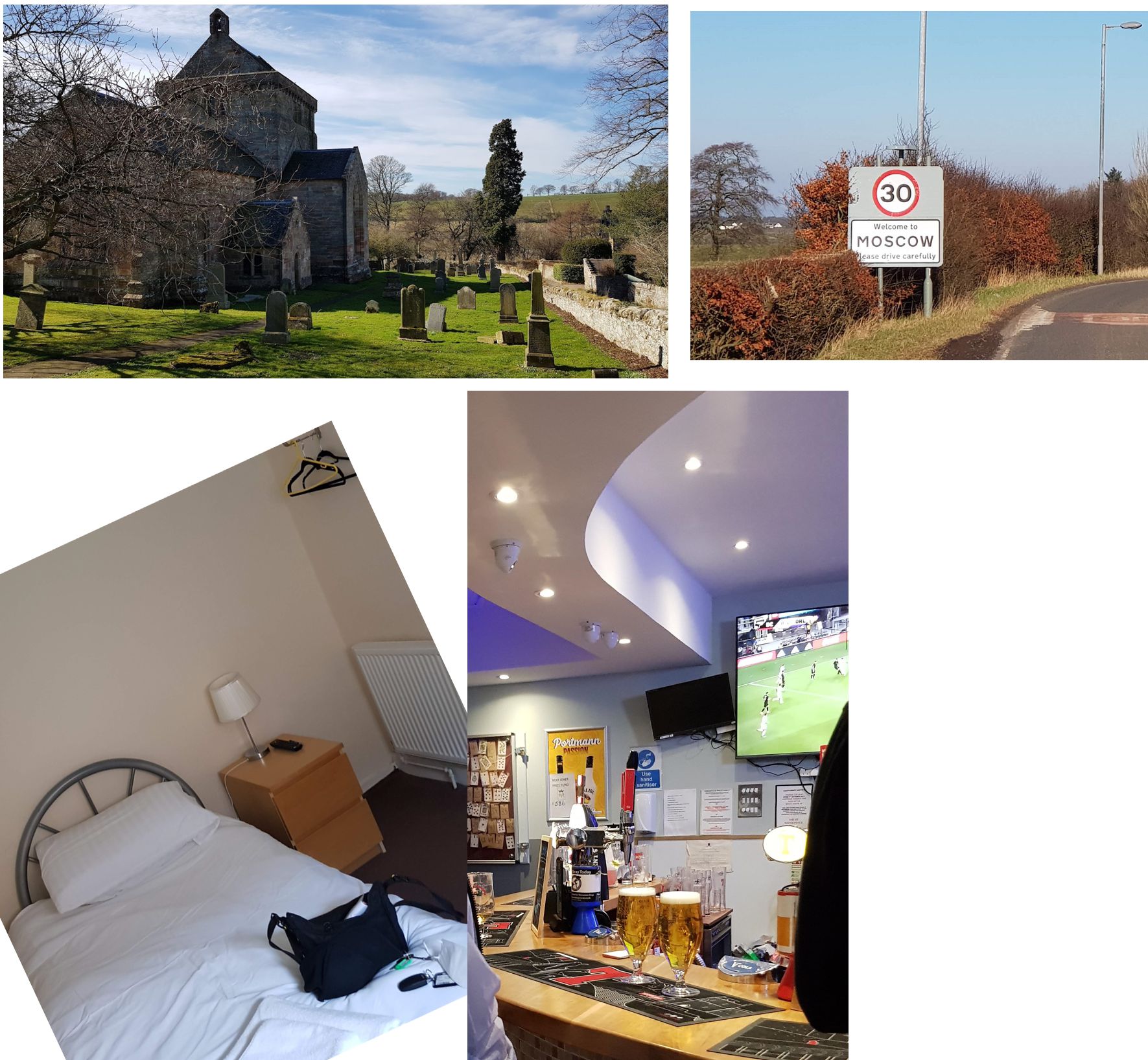
Was funny to come around a corner and see the sign 'Welcome to
Moscow' with the hostilities going on over that way I do hope
it's a typo hahaha.
On to Kilmarnock for the night and got a room at a great pub,
the Portland. Cheap and Cheerful with fabulous food.
Don't believe the myth about bad food in Scotland, it is
tremendous.
Reason 1 for coming to Scotland
The Falkirk Wheel
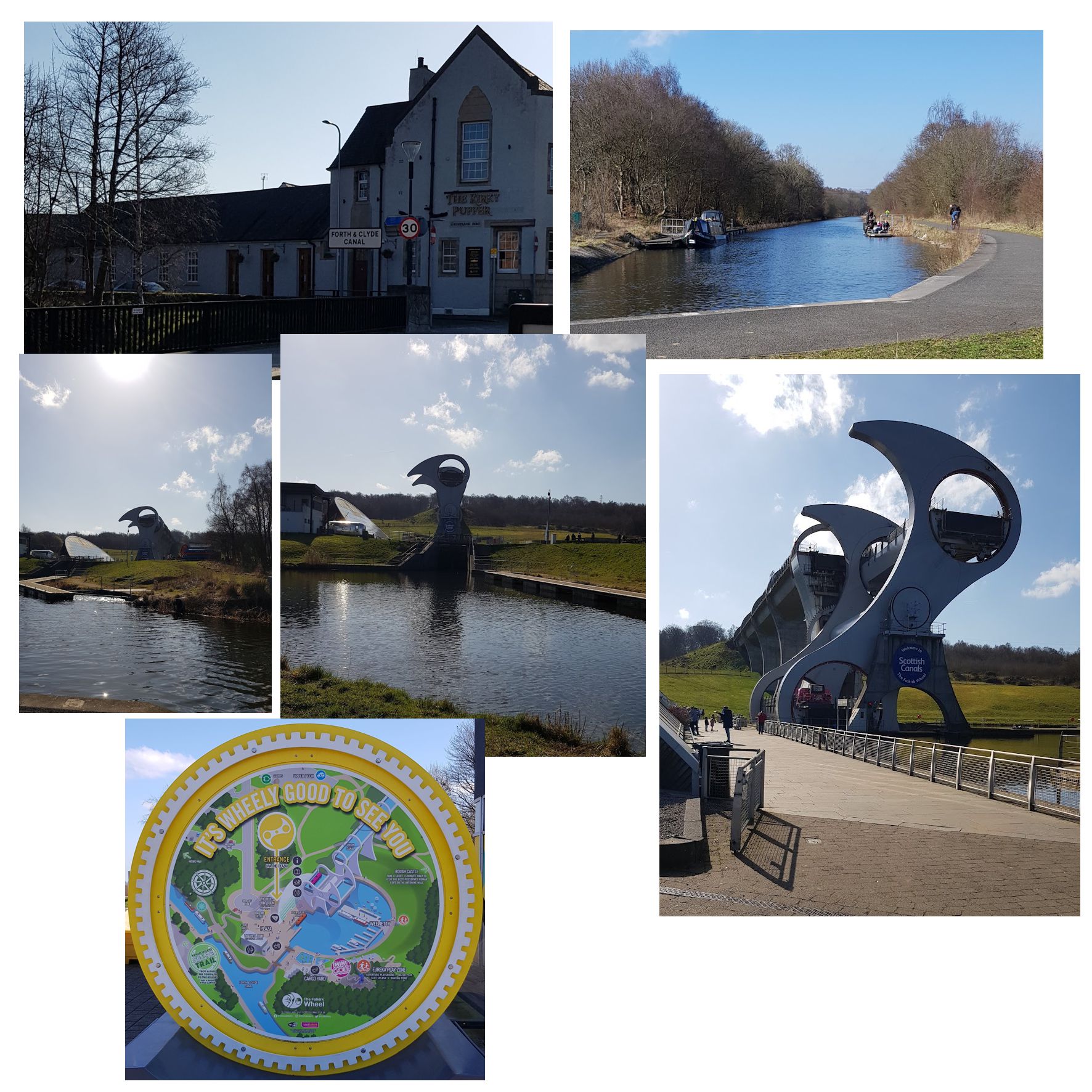
It was everything I imagined.
I followed the Union canal and found my way to the village of
Falkirk and there was the wheel.
It's 20 years old now and has been a dream of mine to see it
carry the canal boats from one canal to the other.
The wheel does away with the need for locks, as it moves through
gravity and a big wheel that only takes the energy of about 8
kitchen-kettles to cycle the heaviest boat up or down.
If you've never seen this wheel in action check out some YouTube
videos and prepare to be amazed.
Reason 2 for coming to Scotland
The Kelpies
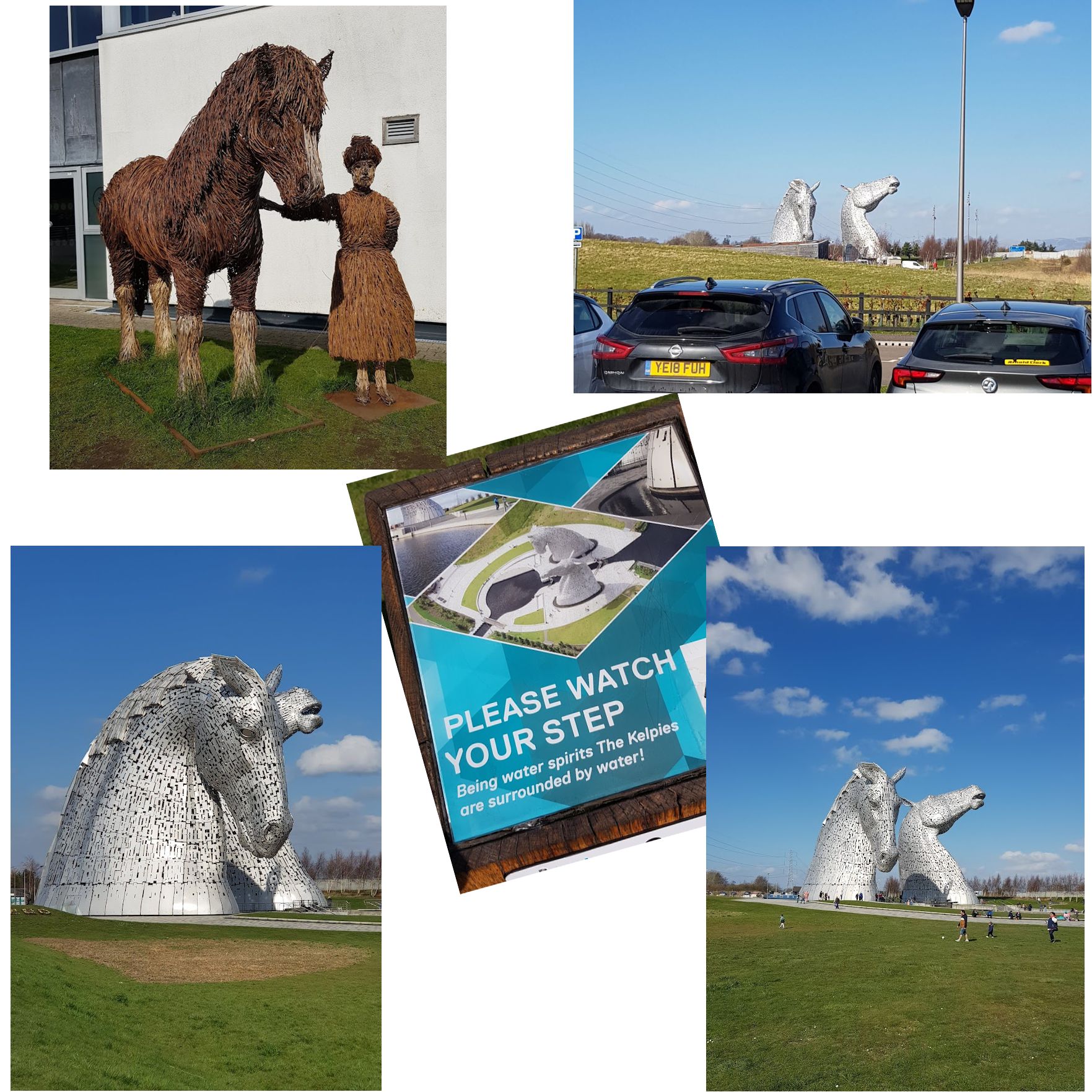
Few things in life take your breath away - the Kelpies took
mine.
Even from the carpark they towered above the landscape.
Standing 30m high they were magnificant and stand proudly out of
the water, allowing me to imagine the rest of them below the
waterline.
Well done Scotland, this was better than I could dream.
Saint Andrews was a surprise
Not sure how I ended up there
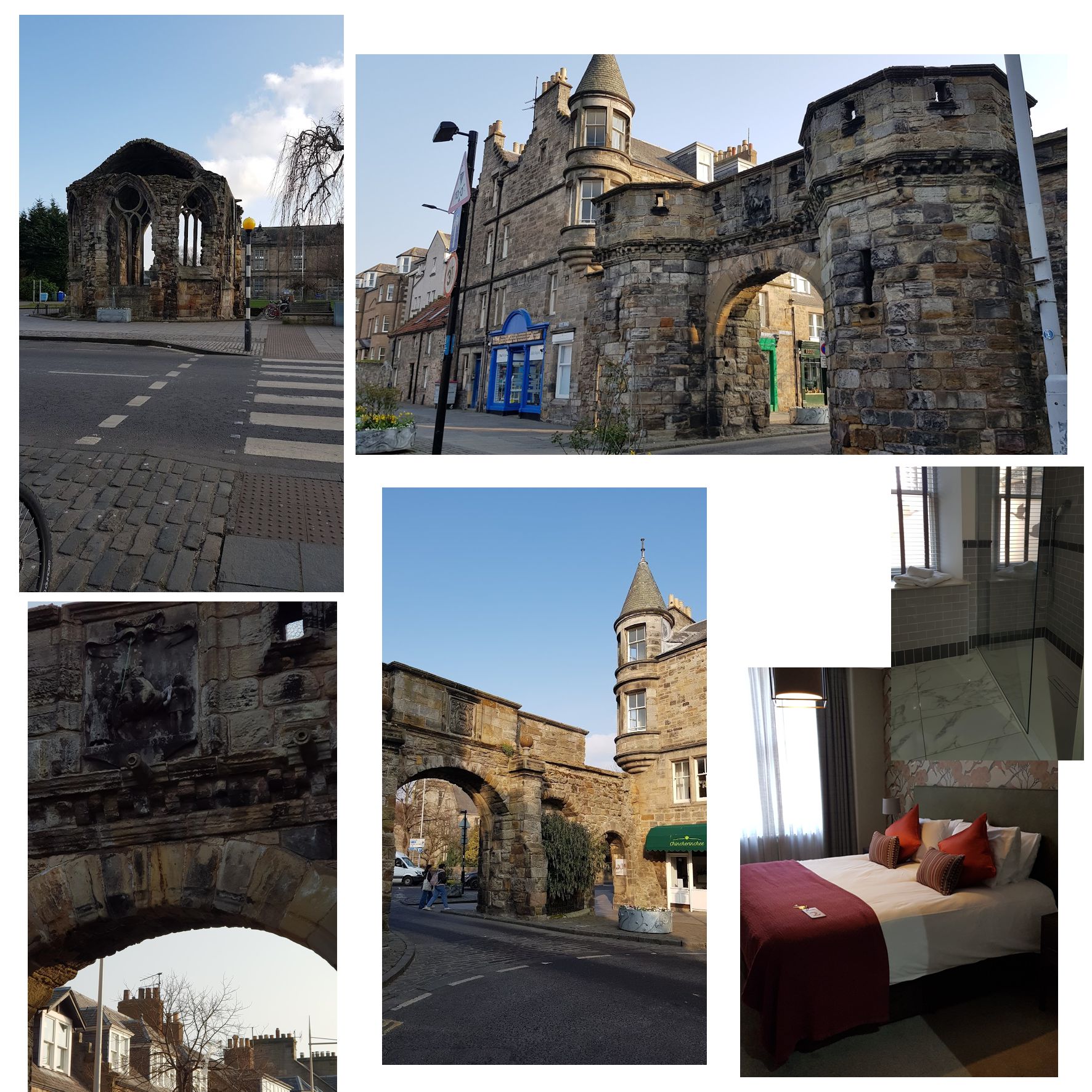
I had no intention of going there but took a road less
travelled.
I have no interest in Golf and I hadn't thought about Saint
Andrews but it was a delightful surprise.
A very old walled town which has really kept it's heritage
alive.
There are the remnants of the old priory in the main street and
recognition of the site being used as a Madras School, something
I knew nothing about. Saint Andrews born, Dr Andrew Bell,
developed the Monitorial school system based on the Indian
Madras system even bringing it to Australia.
Found a great pub & room, The Saint, and once again, the food
was outstanding.
Olde worlde commercial centre and quite a laid back feel about
the town but I'm sure it hums with Uni students from the
prestigious colleges at weekends!
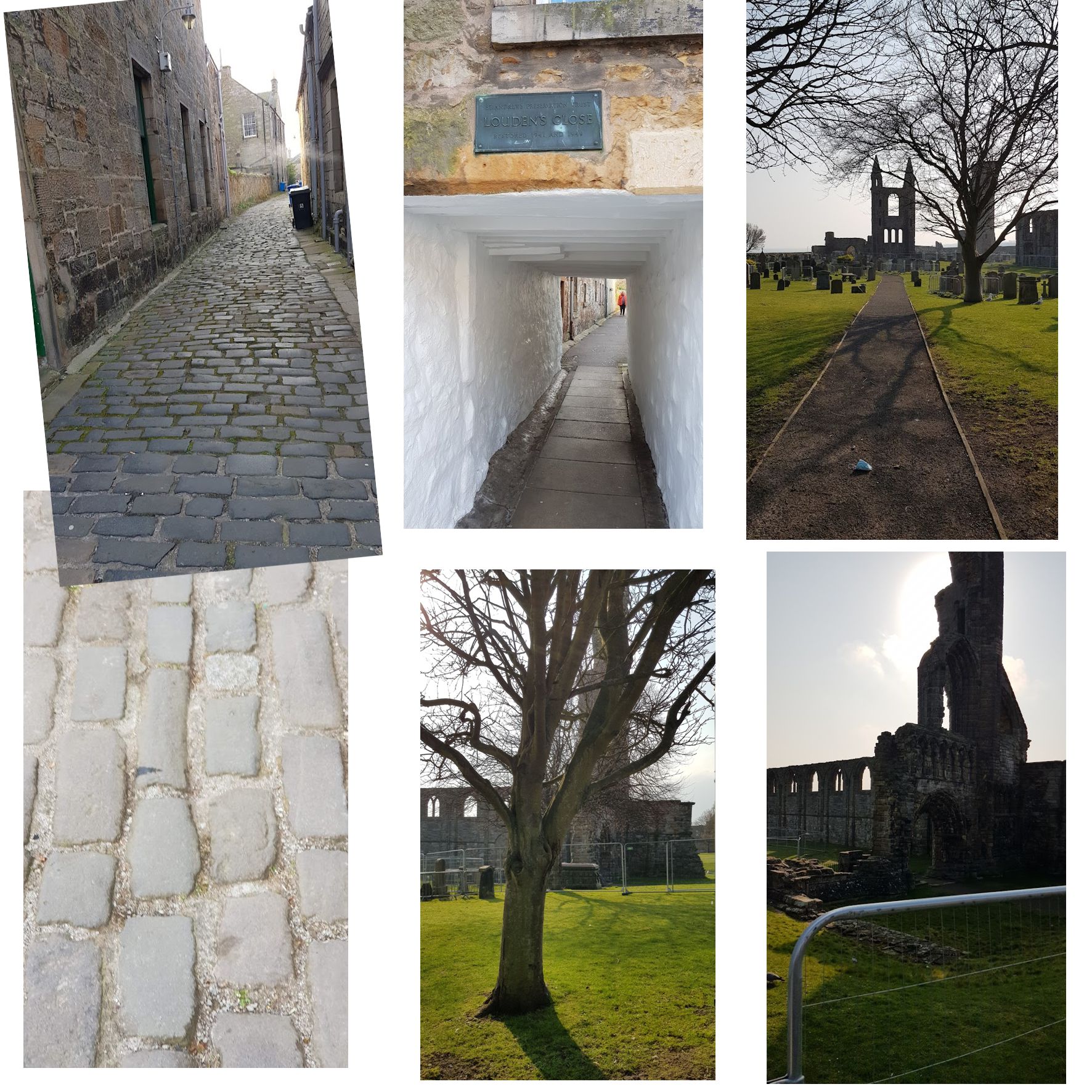
Still in Saint Andrews, more cobbled streets and narrow walkways
under buildings.
The Cathedral and Castle are mostly ruins and very fenced off as
they are hazards, so not much to see of them but the main arched
entrance into the old town is still there and a real focal
point.
And yes, another image of the cobblestones and alleyways, I
can't help myself.
Travelling North-ish
No idea where I am really
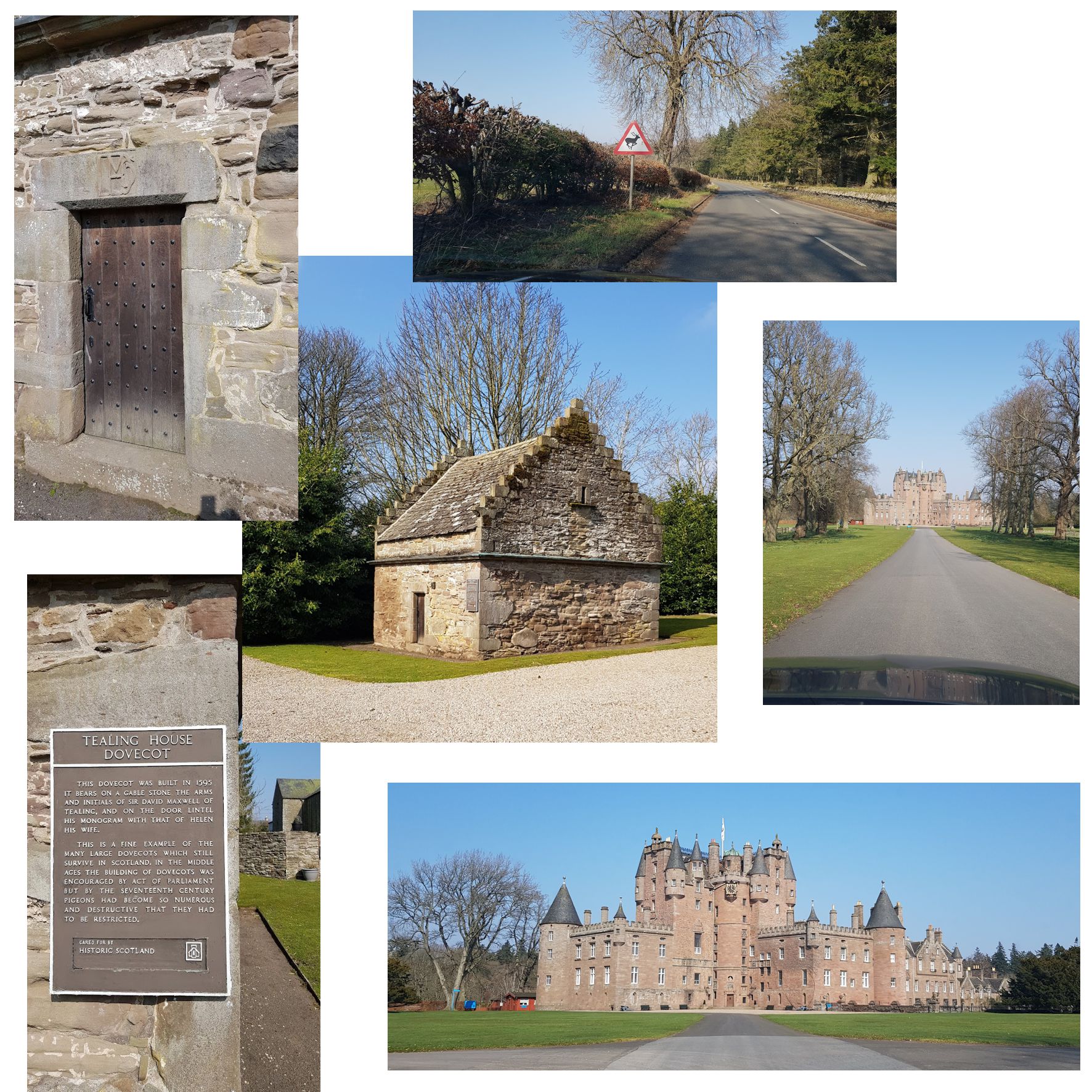
Found an old Dovecot circa 1595 and another castle.
If you cruise along slowly and keep an eye out for small
'scottish heritage' signs you can find some fabulous things.
This dovecot was a building to house pigeons and doves! Private
citizens weren't allowed to keep bird but nobility were and they
built the birds nice places to live. (and presumably they then
ate them.)
This building dates from 1595 and has the coat of arms of Sir
David Maxwell of Tealing over the door lintel.
The pinkish castle is Glamis Castle and it really is like
something out of a medieval fairytale.
It's been in the Lyon family since 14th century, but my imediate
thought was, what a mowing nightmare. How crass am I hahaha
Driving on, all the while keeping a sharp eye out for Deer!
Aberdeen, the Granite City
When I say Granite, I'm not joking
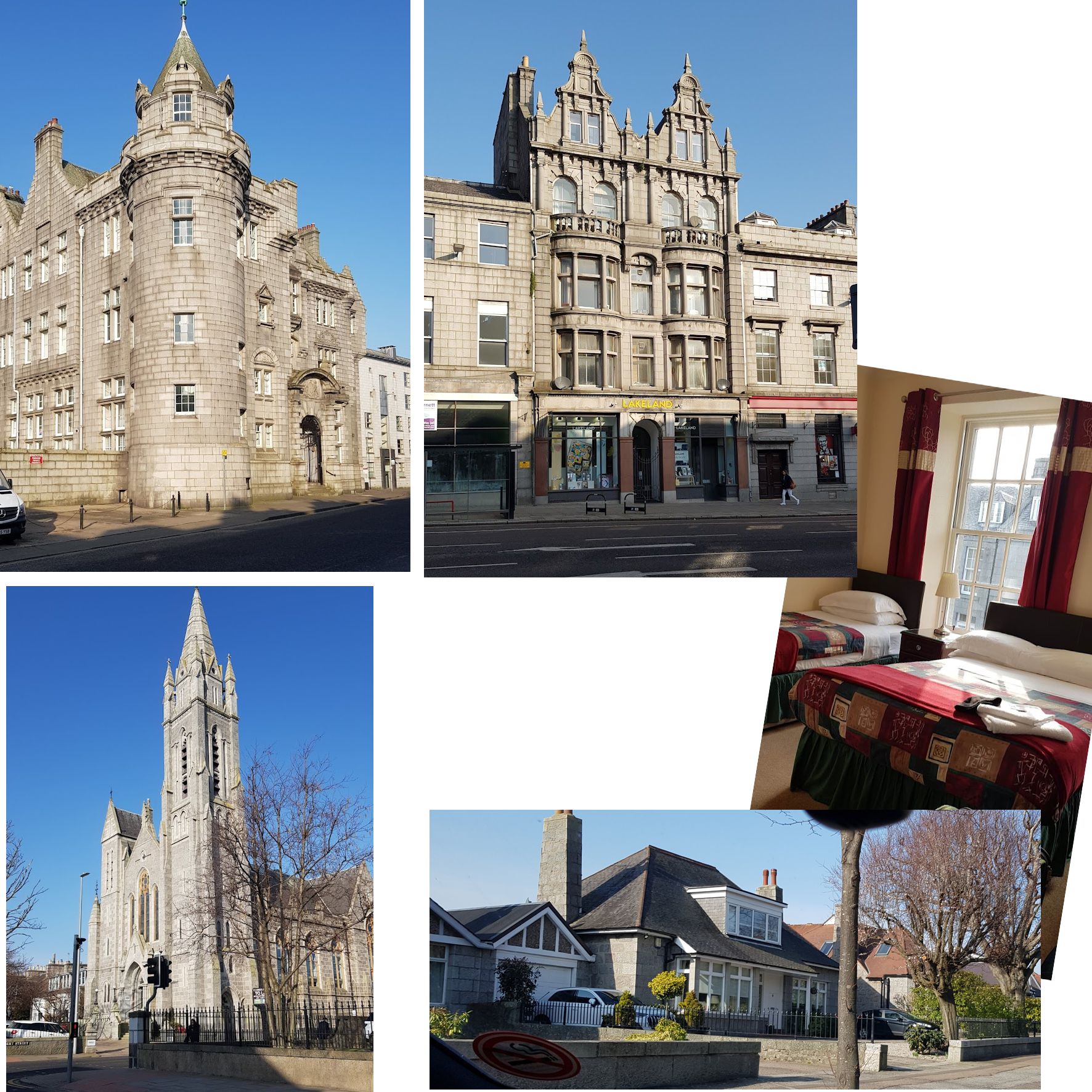
And I don't mean small bricks I mean the building are made of
large granite blocks.
The post office, churches, commercial buildings and even private
houses.
Granite is the local stone, so they quarry it on the spot and
have no freight costs, they just build with it everywhere.
It is such a beautiful city and I found a great BnB, the Royal
Crown Guest House in Queen Street.
The owner was fantastic and allowed me to park in his car park
to get the car off the street.
It was just a short walk up to the the city centre on Union
Street which is called 'the Granite Mile'
Driving in Scotland
Taking back roads
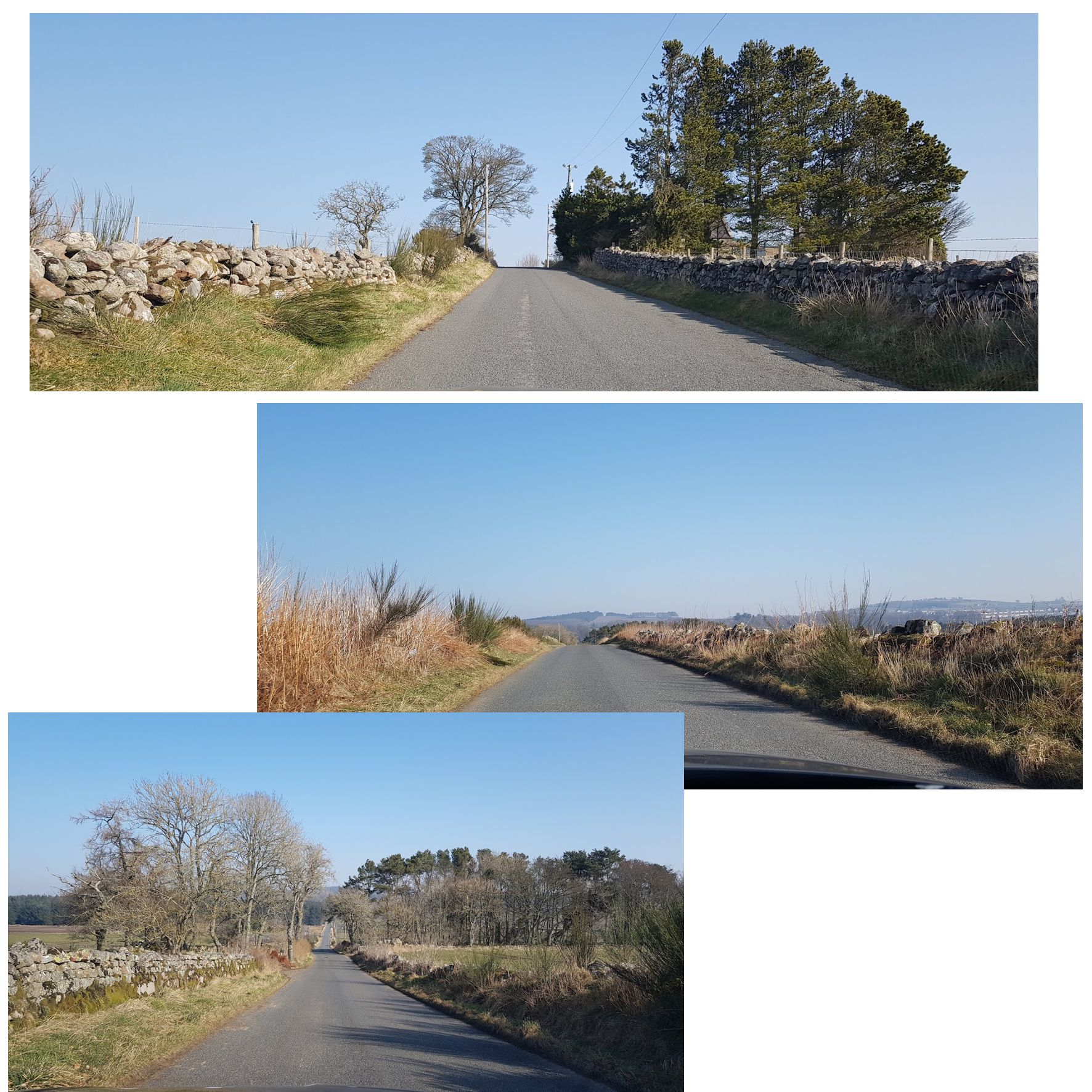
Farms are walled with stone fences, the roads are narrow with
the occasional wider passing areas.
Polite drivers reverse back to the nearest passing point and
everyone is so nice about it. The rule is to flash your lights
to indicate you will wait, while they may come ahead. It works
well and people always wave.
And once again I note that I'm alone in the wilderness without
many cars so I can dawdle along and enjoy things on the side of
the road.
Alford West Church and Graveyard
Don't you just love old graveyards?
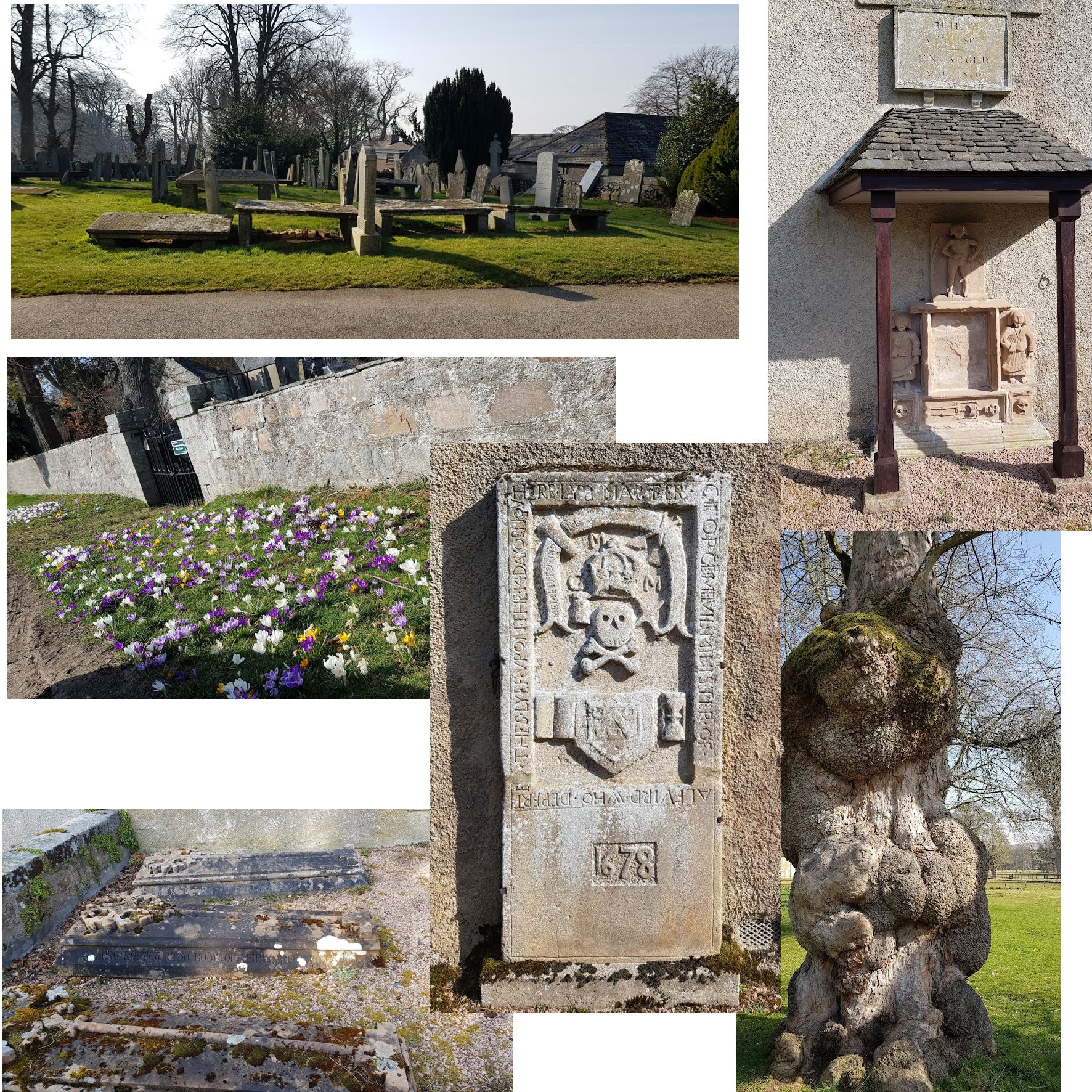
I'm not morbid nor religious but I stop at old churhes even if
they're ruins and I spend hours wandering in the graveyards.
They say that prior to photography people used the gravestone to
paint a picture of their beloved and I can believe it. Some of
the stories engraved in stone are amazing.
In the image above there's a rather grand rectangular
gravestone, which records a message around the edge, it says;
"Here lys master george melvile minister of alfvird departed
thes lyef vpon the 14thdayofNov" and was carved in 1678.
The primitive artwork in the sheltering alcove, top right, is
the Balfluig Monument, dated 1725, a memorial to Mary Forbes
(the Forbes family owned Balfluig castle). It's an ornate grave
marker to the vault below and shows squat figures, a skeleton
and skulls.
That tree was probably planted when the Brits were colonising
Australia... time stands still here.
While of Gravestones
Care for a sing-song into eternity?
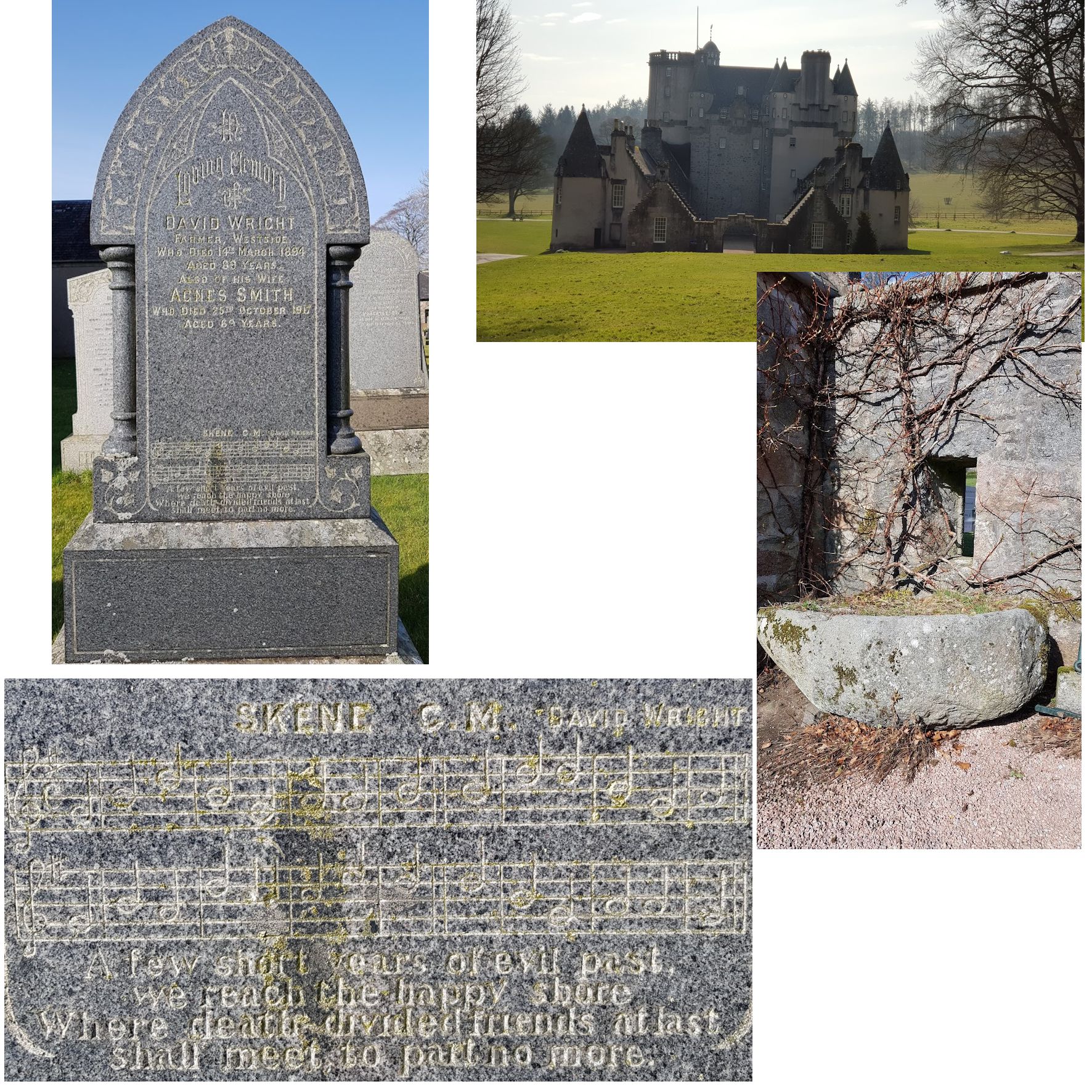
This family, the Wrights, wanted to sing each other into
paradise and carved the music score into the stone along with
the words to their song... "A few short years of evil past, we
reach the happy shore. Where death divided friends at last,
shall meet to part no more."
The castle is Fraser castle on the right was built in early
1600's as a symbol of the wealth of the Fraser family.
Everything you imagine a castle to be, round towers with spiral
staircases & spyholes.
As it's early Spring the castles aren't open to the public yet
and many will only open for a short window in high summer.
I don't mind as I'm more interested in architecture and the
passage of time on the buildings.
Kildrummy Castle
Now this one has some history
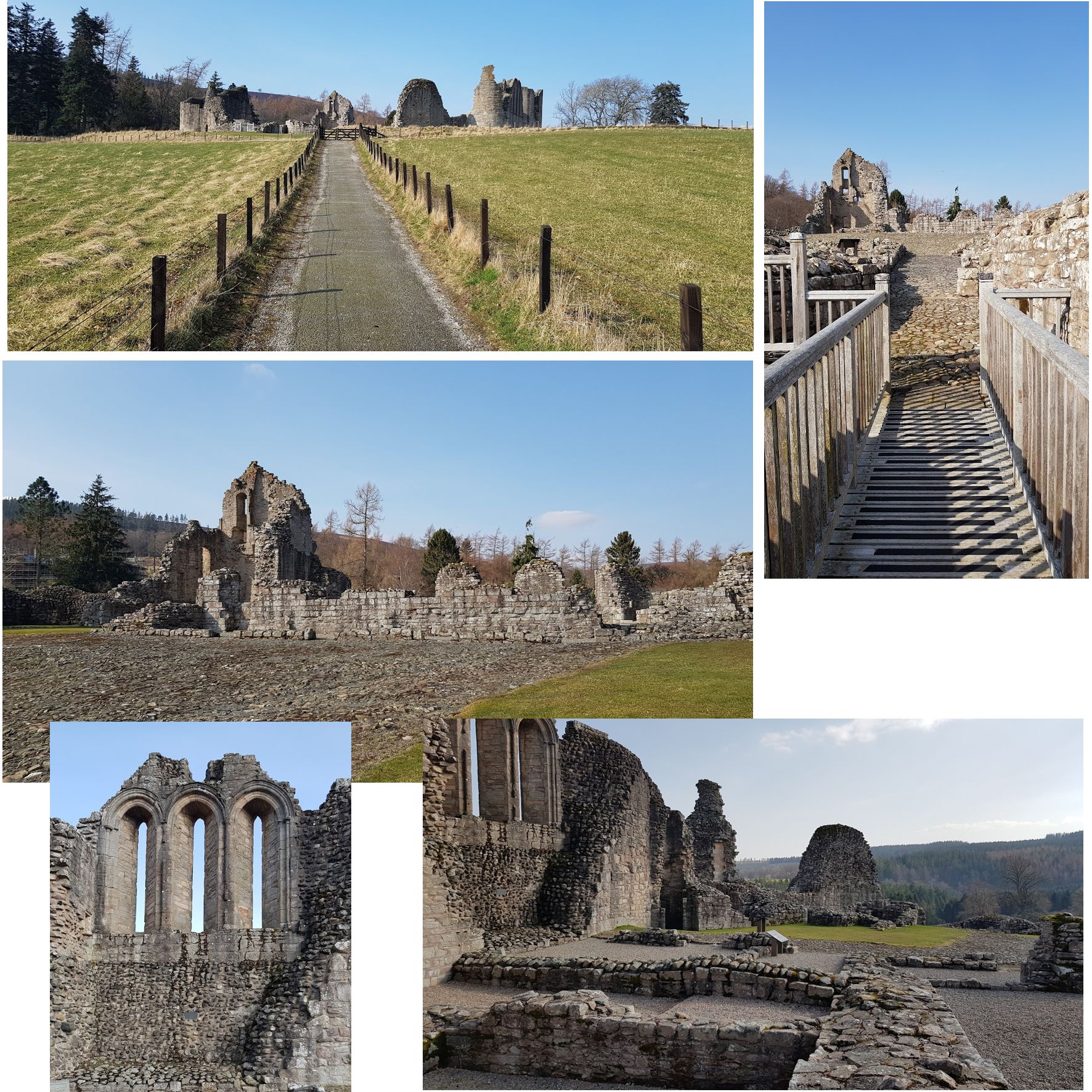
Built in 1200s it was the imposing powerbase of the Earls of
Mar.
In 1335 Robert the Bruce's sister the Lady Christian, defended
Kildrummy with only 300 men, against 3000 pro-English troops.
Christian held out until her husband, Sir Andrew Murray, could
arrive with 800 soldiers.
David Earl of Atholl withdrew his troops but Christian and
Andrew pursued and defeated him.
Further surviving record describe an extraordinary marriage from
1404 when Isobel Countess of Mar, who ruled the estate, wanted
to marry Alexander Stewart (illegitimate son of the notorious
noble 'Wolf of Badenoch').
First she granted her earldom to Alexander, then on the 4th
December outside the castle gates, Alexander handed Isobel the
keys to Kildrummy in front of the assembled clergy & nobles,
formallly giving her back everything she had bestowed on him.
She, holding the keys, then publicly chose him as husband & they
married on the spot... how to marry an Earl but keep your real
estate ladies!
A timeline at the site shows; 1250 work begins ordered by
William, Earl of Mar. 1296 Edward 1 of England visits the castle
after invading Scotland.
1306 Robert the Bruce sends his family to Kildrummy for safety.
1404 Isobel marries Alexander in front of the castle gates.
1715 John Erskine 6th Earl of Mar leads an attempt to restore
the Stuarts to British throne. The rising fails and Kildrummy is
abandoned.
The Highlands
There's snow and so desolate
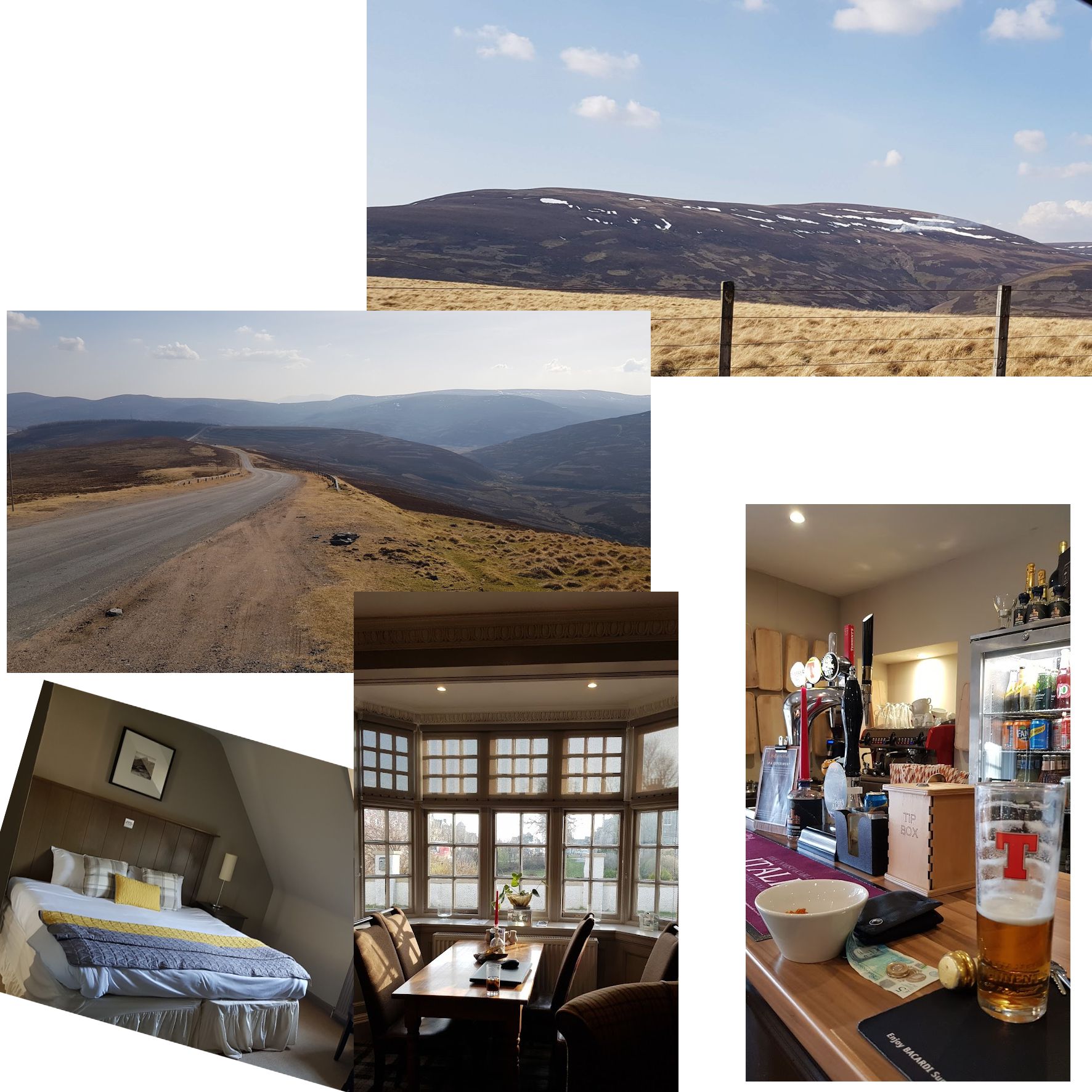
I had no plan and just took lefts and rights as things took my
fancy and ended up crossing through the northern part of the
Cairngorms National Park. It was pretty desolate high country,
deserted and windswept with snow still evident in places.
When I came to a pretty place called Grantown on Spey I decided
on an early stop, with a couple of Pints and a room at the Garth
Hotel.
It was so nice to just relax and enjoy the afternoon sunshine
with the owner.
Goes without saying, the pub food was excellent! I seem to be
saying this a lot.
Following the Spey River
Magic scenery... a million pheasant
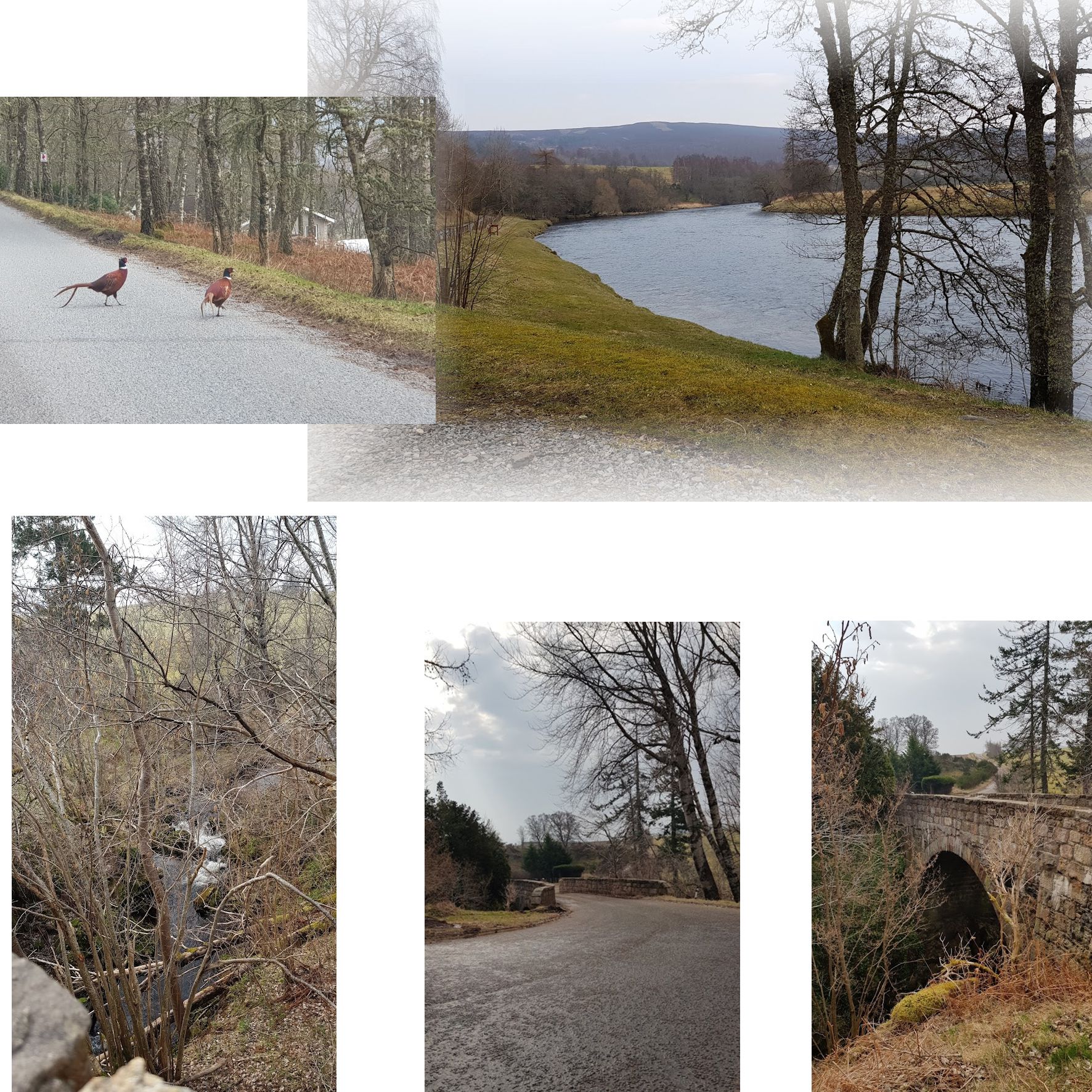
At first I took lots of photos of these amazing pheasants
wandering all over the country road, then I realised they were
probably vermin.
Decided to look for very old bridges and rivers and streams
instead.
The rivers are fenced off quite a bit and signs say you can't
fish as the river belongs to the landowners? There are a lot of
hunting & fishing 'lodges' dotted along the way so they must
have the rivers sewn up.
I did see one public place with signs to say it was OK and it
was packed with fishermen.
An interesting difference to Australia I guess.
Duffus Castle
On the Northern coast above Elgin

Originally timber, built in 1150, Duffus was the seat of the De
Moravia family (really a Flemish mercenary Freskin family who
changed their name when granted the land).
They built a timber castle on a large artifical mound in 1151.
The stone castle and defences were addded around 1305.
It was a mistake to build the stone tower on unstable earthworks
and the north wall of the tower slid down the hill.
The site is encircled by a wet ditch and the ancient bridge
still stands.
That image of the narrow space with 2 windows is one of my
favourite and a real treasure from the trip.
Piggies and Picts
Free range pigs, an unusual sight
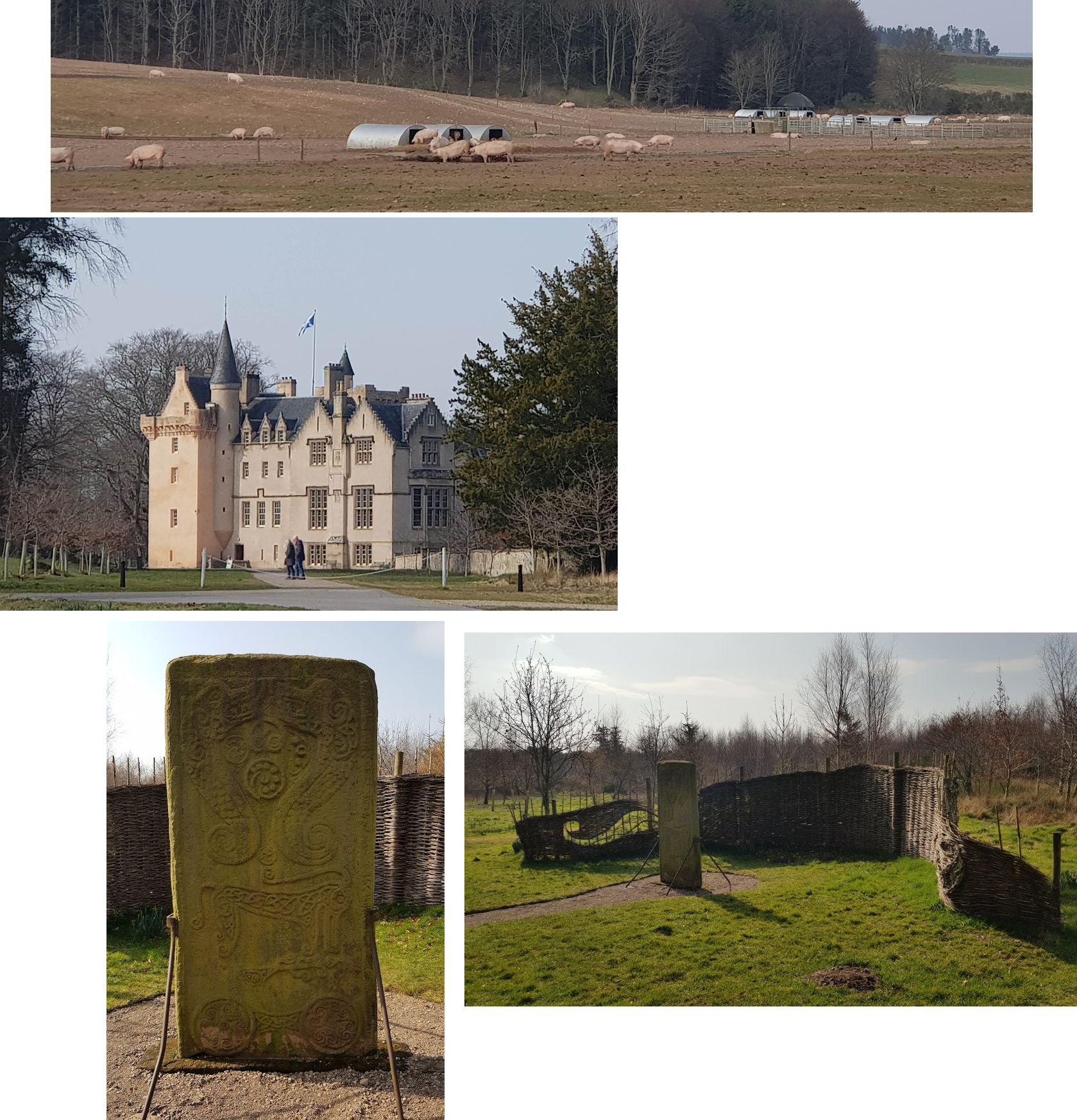
I kept seeing farmland with low huts and I wondered why... then
I saw the piggies roaming free.
They seem happy, making mud puddles and pottering about. (in
Australia pig farming is more intense pen-style).
In the grounds of Brodie Castle was the Pictish Rodney's Stone,
carved about 1200 years ago.
History of the stone is obscure it could be a beacon for the
community and may have maked a place of baptism, marriage or the
Mass.
The inspription in Ogham (early medieval alphbet) has been worn
away and only the word Ethernan is decipherable - maybe the 7th
century saint?
The stone is carved with imaginary beasts but the meaning is
unknown.
The stone was named Rodney's Stone celebrating Admiral George
Rodney's victory over French in 1782 (strange! a Scottish stone
named for Englishman fighting the French in the American war of
independence).
It's been moved several times over the centruries even being
used as a gravestone in 16th century, with letters AC and KB
added.
It was returned here to the grounds of Brodie Castle in 1840.
Loch Ness
Viaduct & the loch
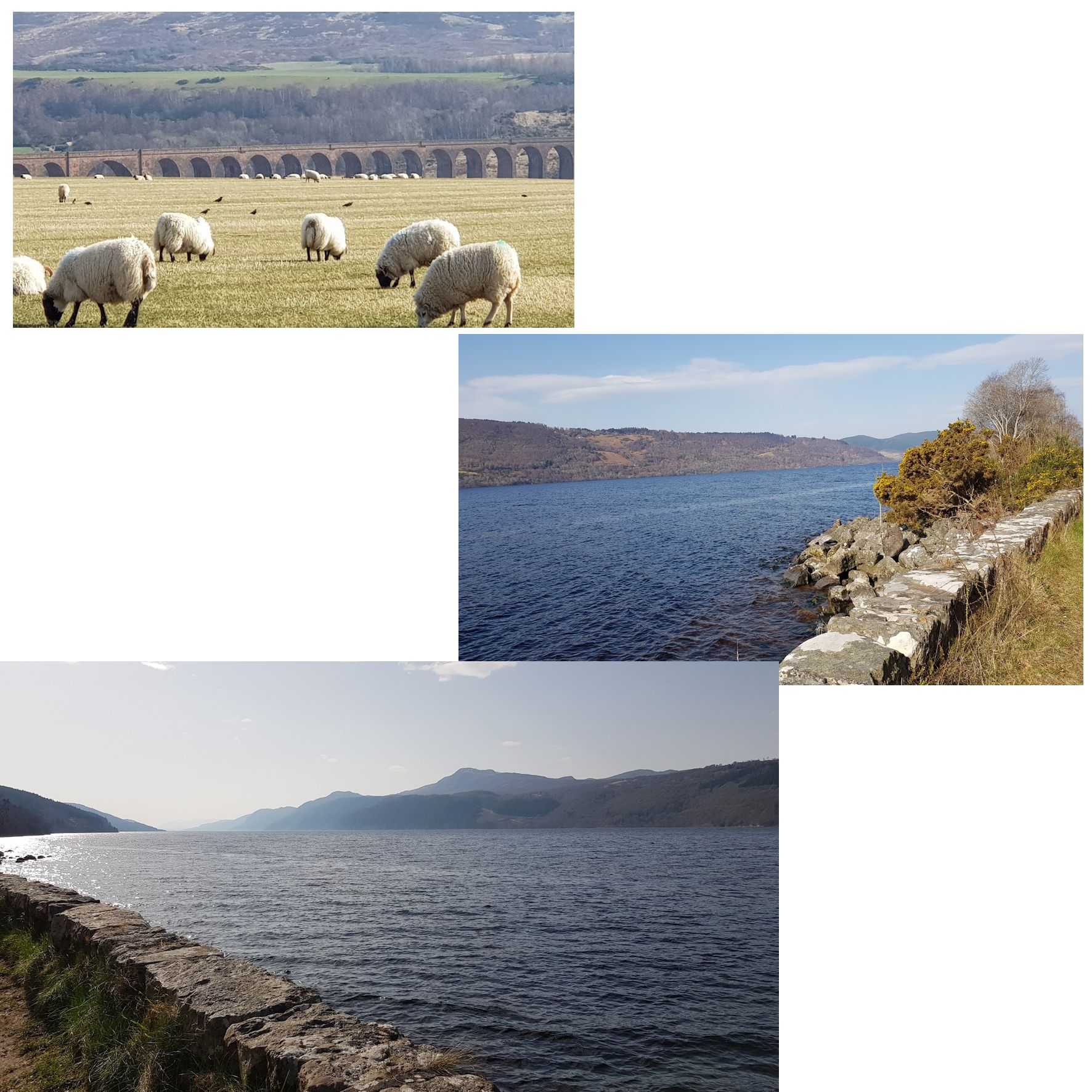
I love bridges and can't help stopping and taking photos. This
is a railway viaduct south of Inverness.
I wended my way south and west until I hit Loch Ness at
Inverfangaig.
It is certainly a grand waterscape, long and deep, the
wilderness reminded me a bit of New Zealand around Milford
Sound.
Being my usual antisocial self I avoided the Loch Ness gift
shops and tour boat *shudder*.
I decided to just follow the water and see where it led... and I
found one loch after another.
The roads were a bit rough and windy with little traffic, but
picturesque little villages popped up every now and then.
A Bridge, A Memorial & Ben Nevis
Bridge of Oich & a WWII Commando memorial
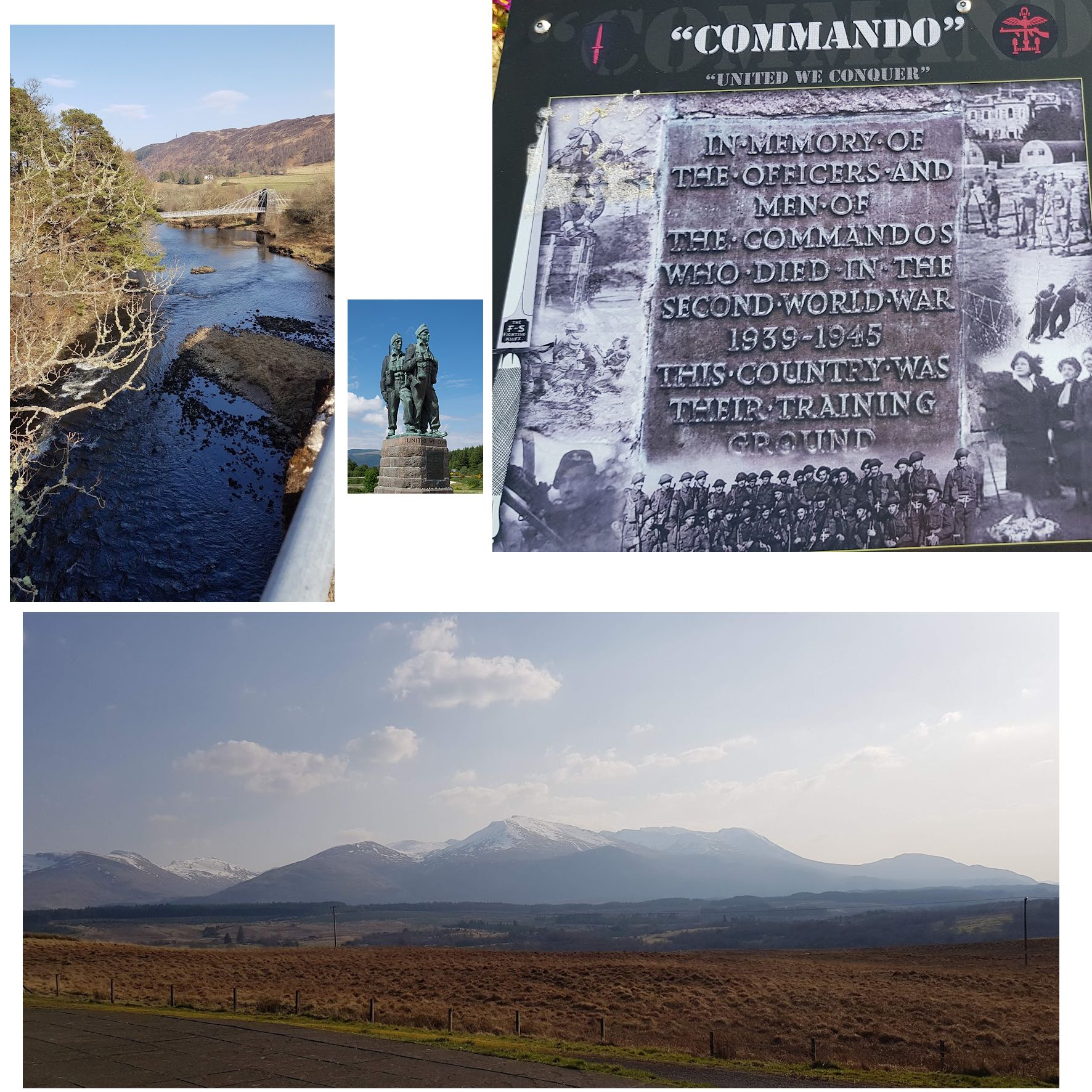
Bridge of Oich over the River Oich, is a 46-metre suspension
bridge, designed by James Dredge in 1854.
Continuing my southward trek I stopped at a lookout to view the
mountain Ben Nevis (highest in UK).
Within the parking area is a statue of soldiers and I realised
it was the Commando memorial.
During WWII the British trained in these rugged mountains.
I need to watch some old British B&W war movies now learn more
about these officers and men of the Commandos who are
commemorated here.
Fort William
Western Scottish Highlands
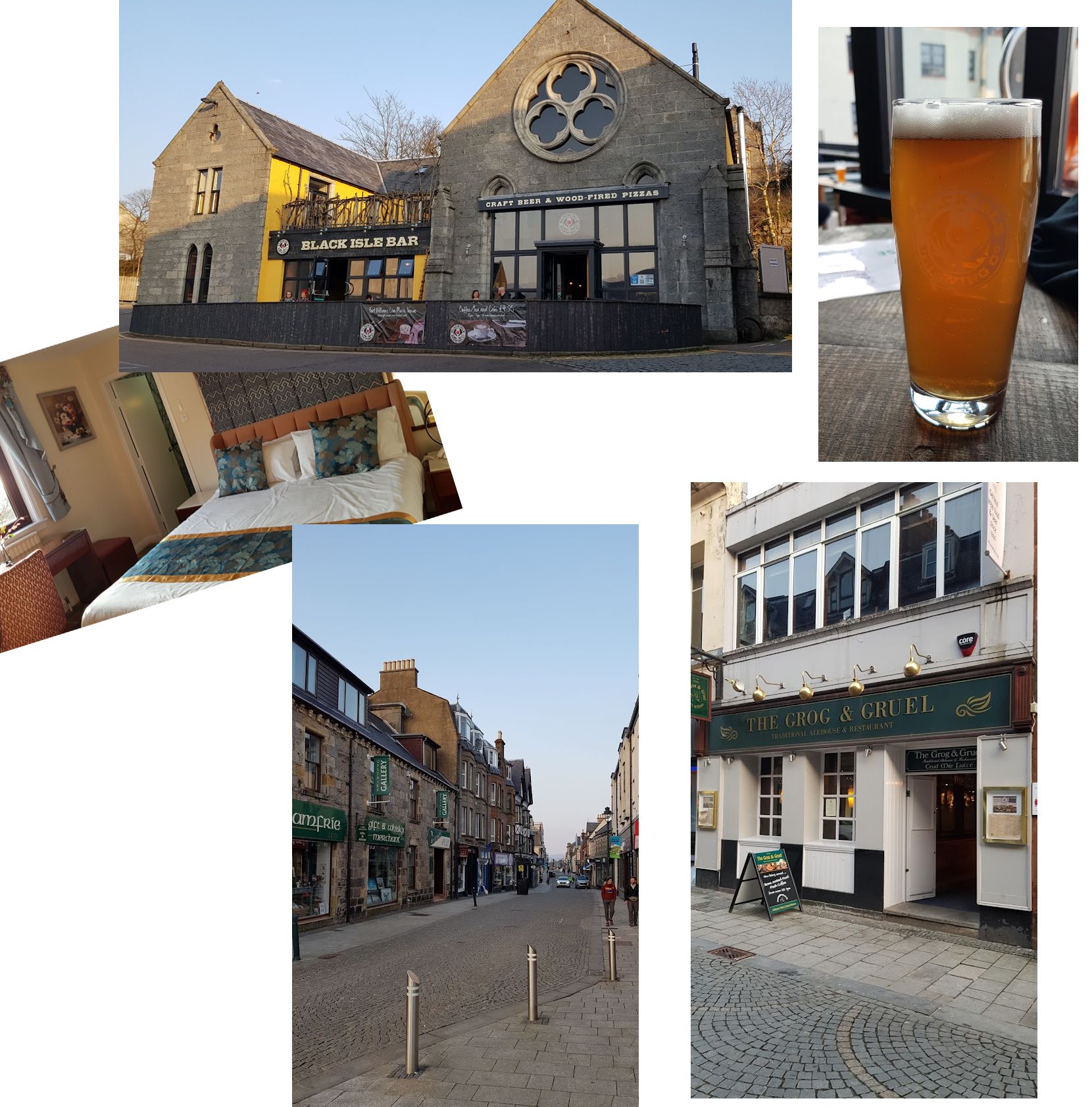
I followed Loch Ness, then Loch Lochy and now I'm at the top of
Loch Linnhe at Fort William.
Originally built in mid 1600's to try and keep the peace in the
highlands it's had a turbulent history.
It was destroyed but rebuilt, and named for British monarch
William III, then it was dismantled so they could build a
railway!
The town is old and quaint and I stayed at the Muthu West End
hotel, with a lovely view out over the Loch.
I had a pint at the Black Isle Bar, very hipster craft
brewery... more interested in selling goumet pizza than running
a pub so I wandered off.
Found the Grog and Gruel... English Pub at its best.
Spent my time chatting to locals and hearing what they think of
Australia.
Castle Stalker
What a site to behold
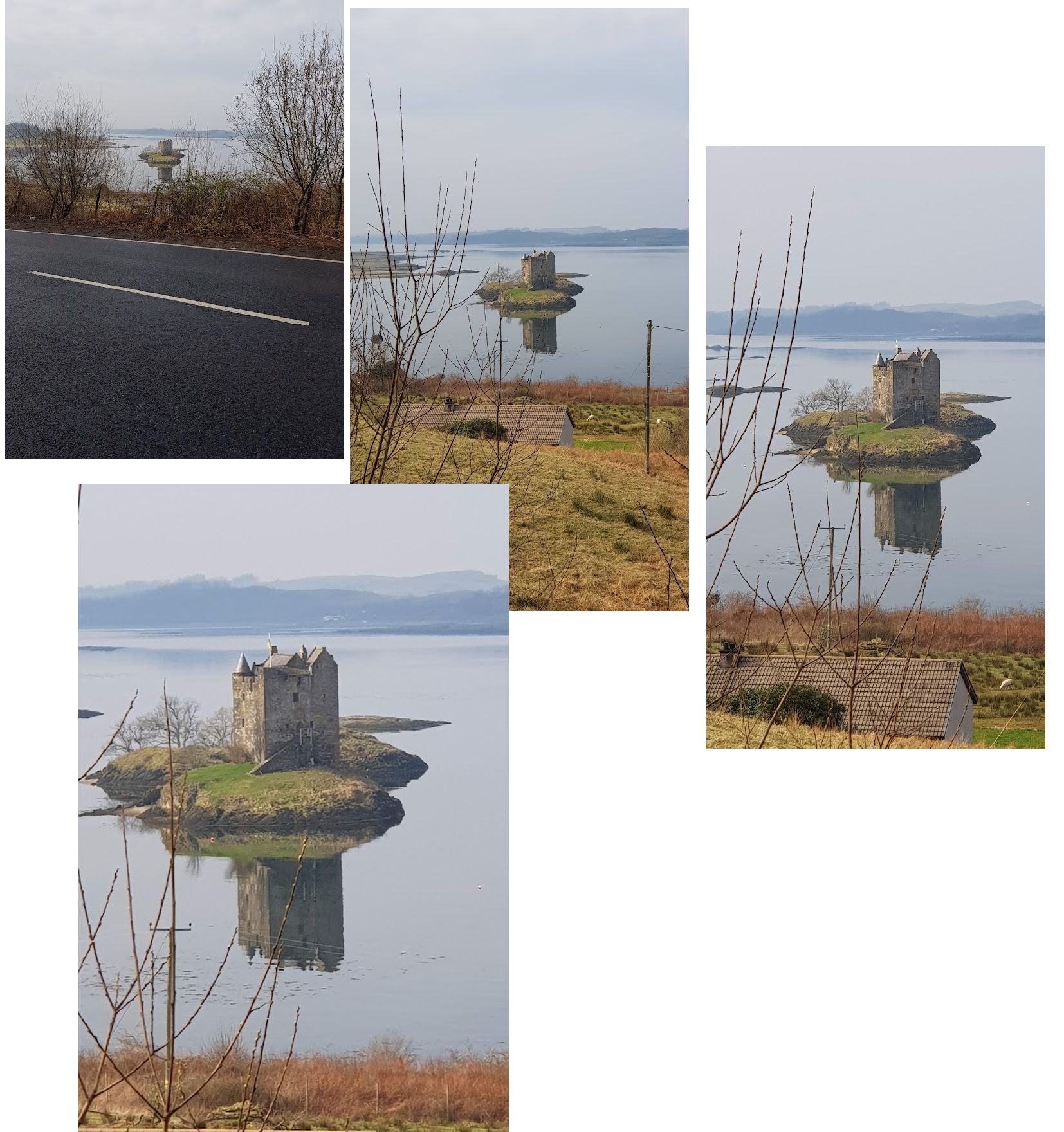
You come around a corner and there, in the mist, is a castle,
floating in the lake.
It's Castle Stalker, which was originally a fort built in 1320
by Clan MacDougall. When the Stewarts took over the Lordship of
Lorn they built the stone castle on the site around 1440s.
It sits on a the edge of Loch Linnhe on a tiny island, only
accessible at low tide. The name "Stalker" comes from the Gaelic
Stalcaire, meaning "hunter" or "falconer".
King James IV of Scotland (a relative of the Stewarts) visited
the castle in 1620, and in a drunken bet lost the castle to Clan
Campbell! *bummer*
Remember the battle of Culloden
Memorial Stone to the Stewarts
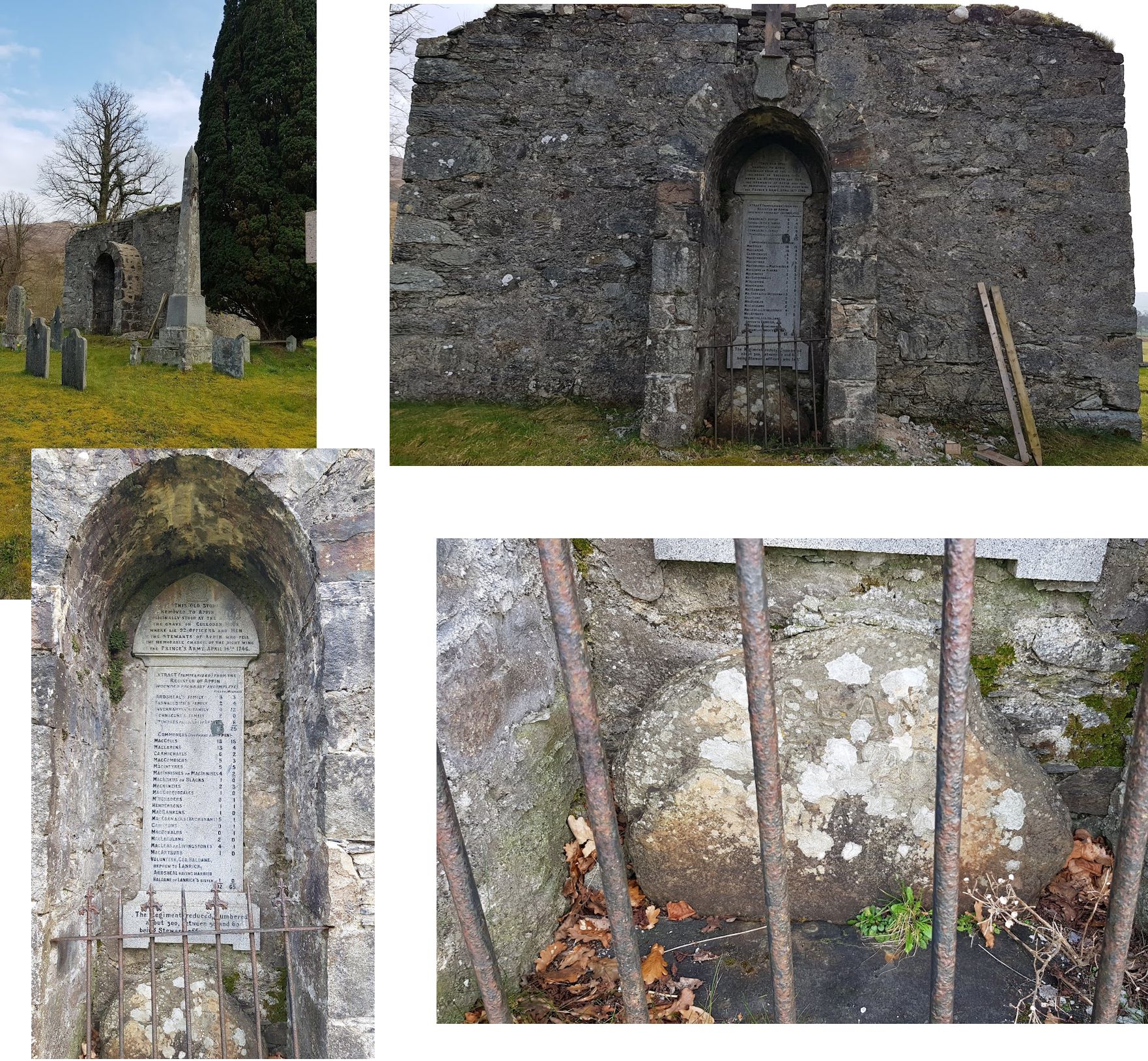
Ok first some history. There was a Jacobite Rising (1689-1746)
wherein some Scots wanted Bonnie Prince Charlie to return to the
throne of Scotland.
There was a decisive battle at Culloden 16th April 1746. Charles
lost, and many who fought were buried there.
Just down the road from the site of the battle is the old Appin
Parish Church which has a memorial describing how the Stewarts
of Appin took part in the memorable charge of the Right Wing of
the Prince's Army.
It lists each famiy name and how many died or were wounded from
the Appin families who answered the call to form up a regiment
to fight for the Stewart Clan.
It directs you to look below to the head stone which formerly
stood over the Stewart of Appin grave at Culloden, commemorating
those who fell in the battle.
You can still see the engraving on the old stone.
Old Appin Parish Church
Ruins but so powerful
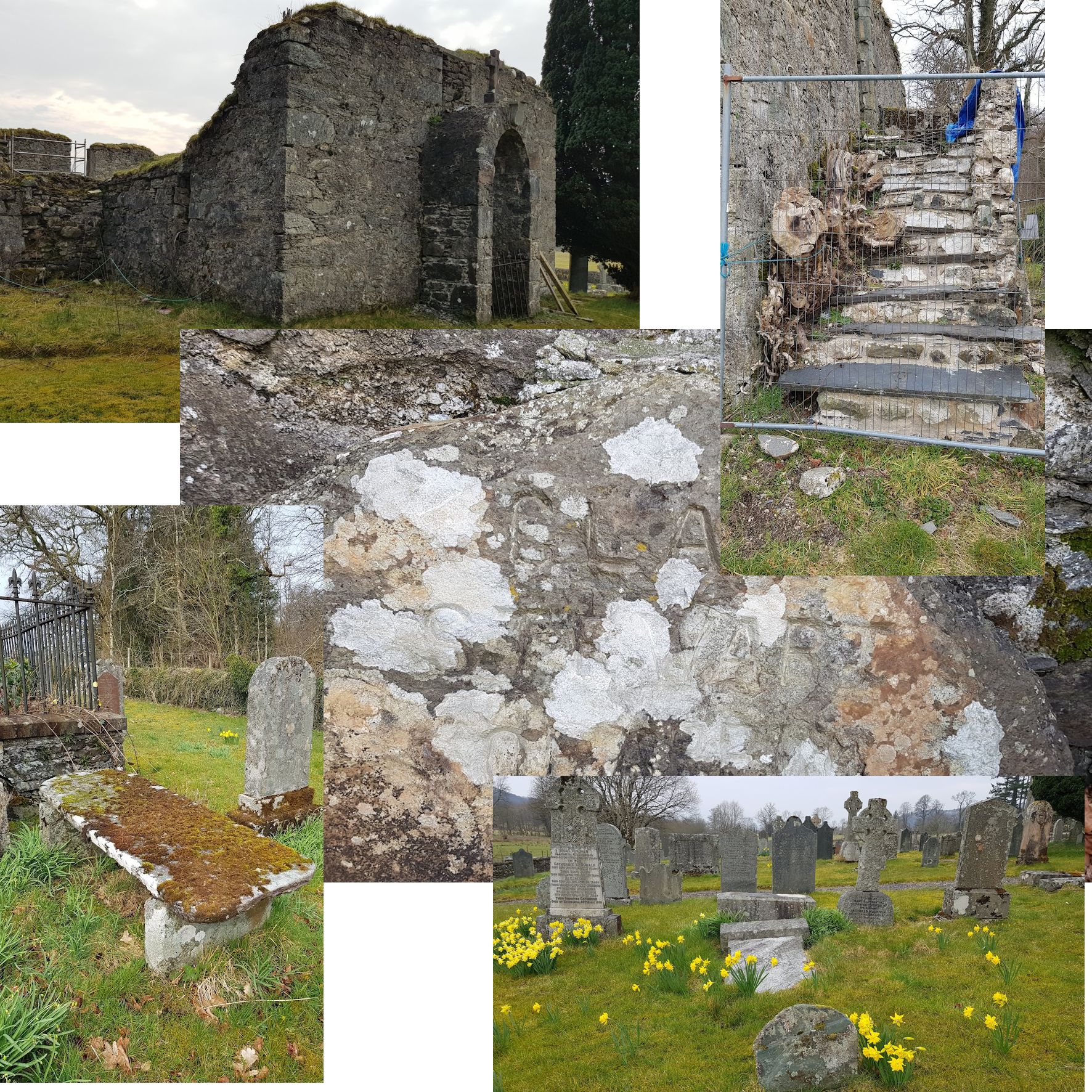
The old church was built in 1749 on the site of an earlier 1641
church and has an external staircase. Now in a state of
disrepair, work crews are trying to shore up what they can to
preserve these ruins.
The burial ground shows the site was used for hundreds of years
but now it is the arched recess with the Clan Stewart Stone,
which is of most historical value.
I found this amusing reference to an old bureaucratic exchange
"Appin Church 1776 Proposed enlargement of the Church. Letter
from Duncan Campbell of Barcaldine. He objects to the proposal
on the grounds that enlargement would be ostentation and all
that is necessary is to keep the buildings wind and
watertight."
It seems Duncan was not given to extravagance.
A Castle in the mist
Reminds me of Turner
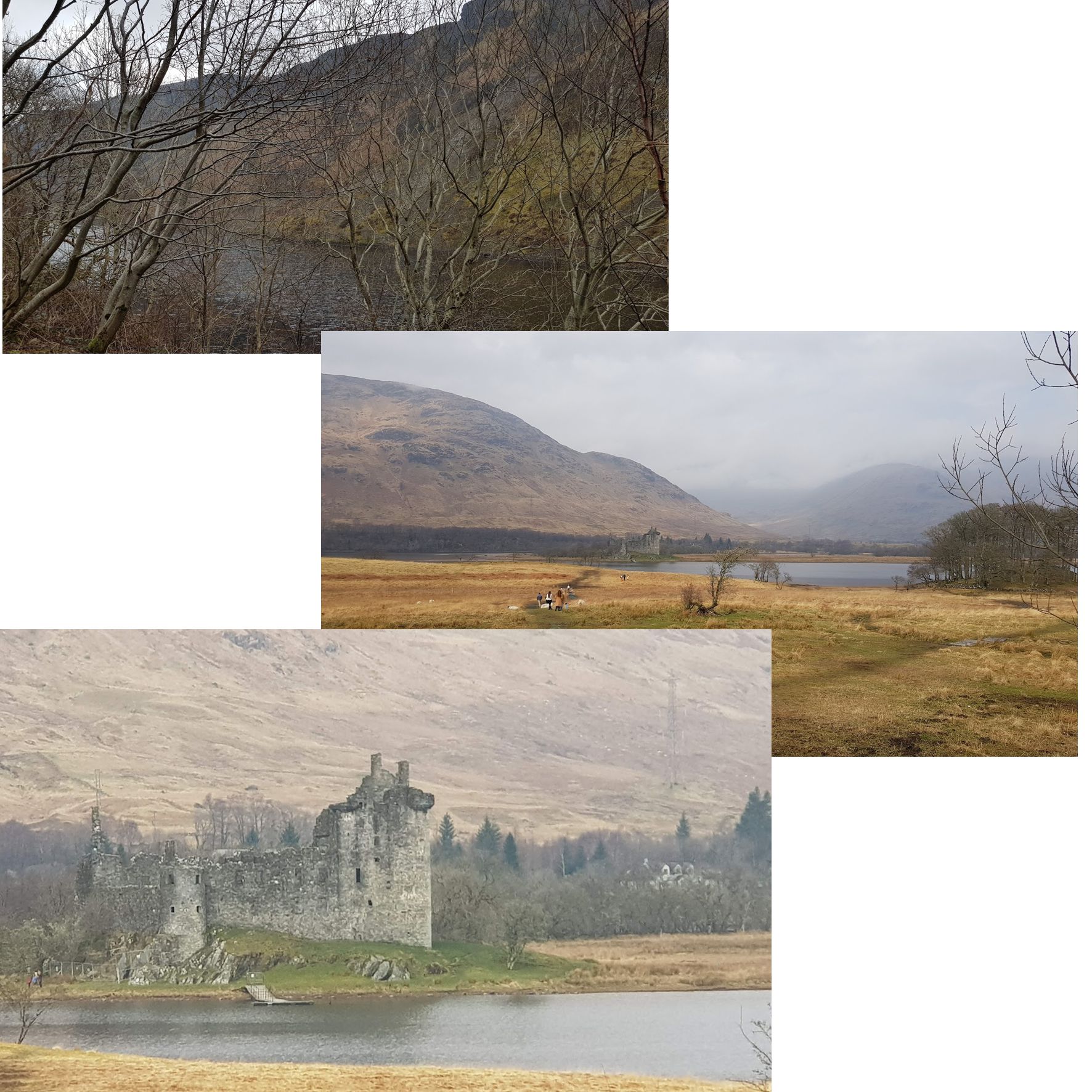
Following Loch Etive and to Loch Awe and nestled at the top of
Loch Awe is Kilchurn Castle, built in the mid-1400s, it was the
base of the Campbells of Glenorchy for 150 years.
It is a ruin now but as I came around a corner I couldn't
believe what was in the mist. It appears to be in the water but
is actually on a rocky peninsula.
It is another castle with a story of a family torn apart in
difficult times.
The Campbells owed their wealth and titles to the British but
their hearts to the Scottish legends and desire for Bonnie
Prince Charlie's return.
First they served the British, then went off to fight with the
Jacobites and lost the lot.
I didn't know why I was so drawn to this castle, and then I read
that JMW Turner (my favourite artist) came and painted the
castle in the early 19th Century. I was there on a misty day,
just as Turner saw and painted it
More Bridges
Viaduct rail line and Lanercost Bridge
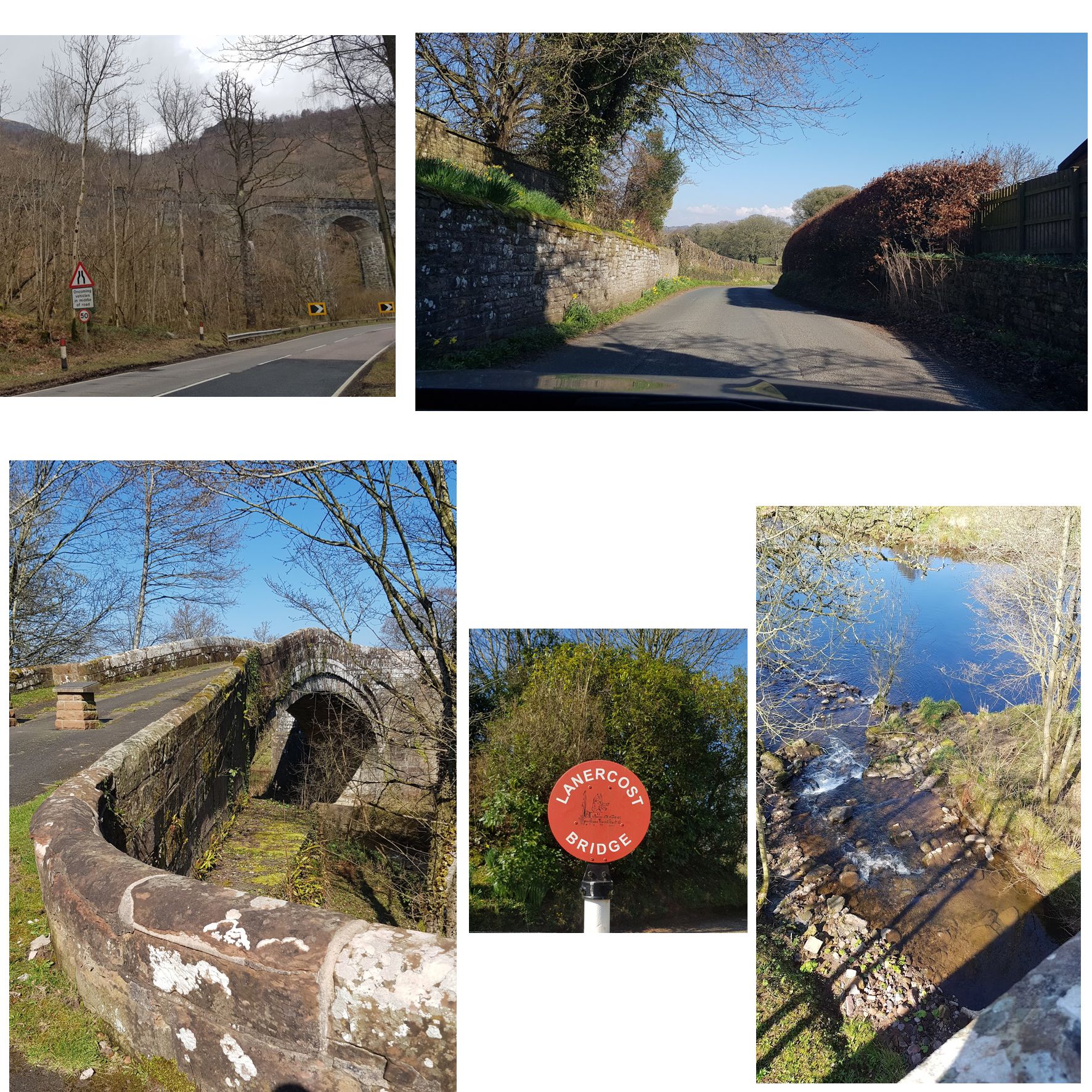
In the mist I would come across the magnificant arches where
railways ran through the rugged countryside.
The Lanercost Bridge is a quaint story where 4 masons paid 493
Pounds to replace a washed away bridge in 1724.
It's a beautiful 3m wide solid masony arched bridge.
Lanercost Priory
Church of St Mary Magdalene
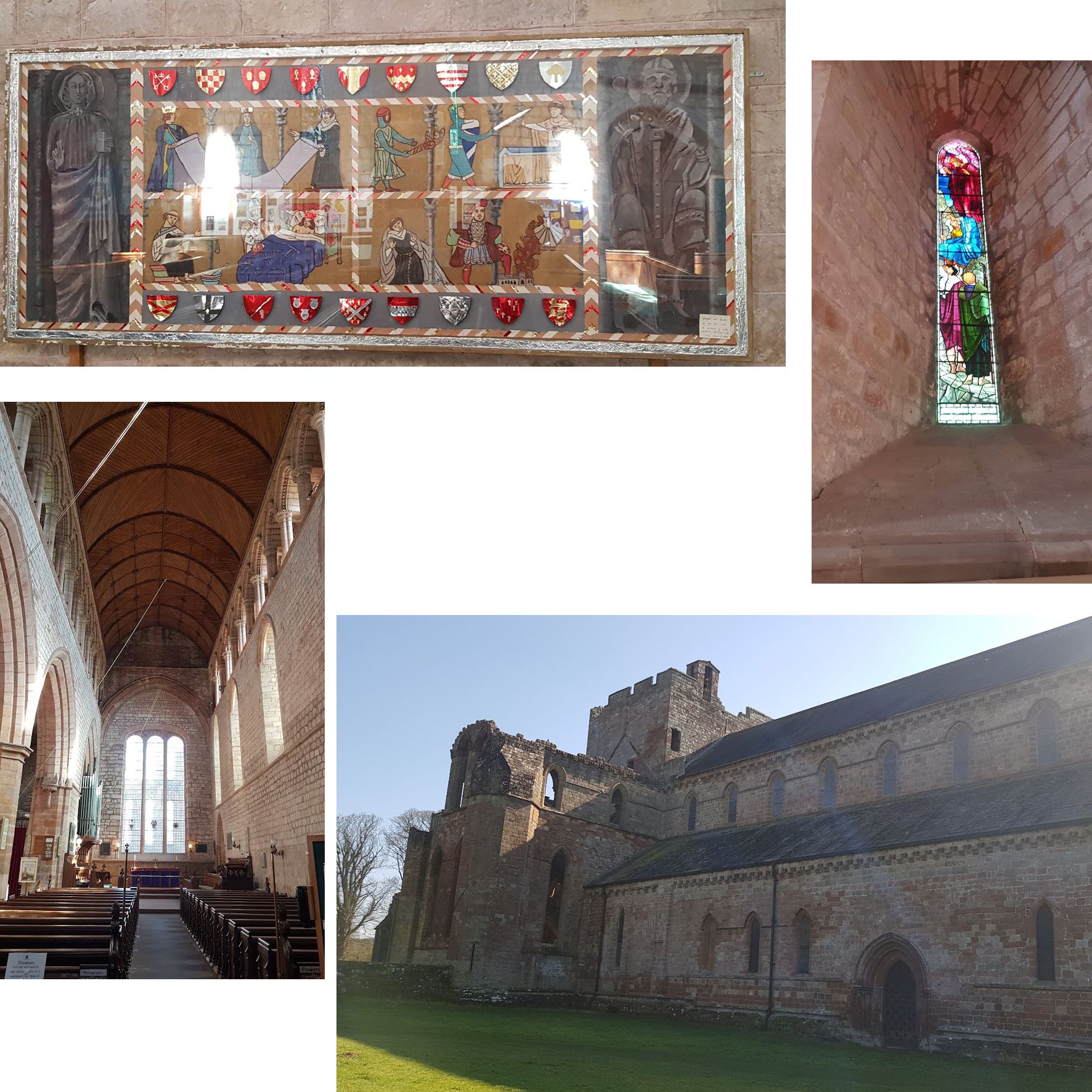
Place of worship for 800 years and an old tapestry.
I'm in Cumbria, England, looking for Hadrian's Wall.
The Priory was founded by Robert de Vaux in 1169 (fresh in from
the Norman Conquest), and nothing says statuslike having your
own priory. He chose the Augustinians to form the community.
It was built over a few years and stones were taken from nearby
Hardian's wall. Some of the stones embedded into the priory
still bear the Roman Names and numbers.
Today the priory ruins stand behind the portion of the church
still in use as St Mary Magdalene.
Being so close to the border it had a turbulent history of being
taken by the Scots and was ransacked several times.
Henry VIII disolved the Priory in 1538 stripping the building
and roof, only leaving a small section as the Parish Church
which is still in use today.
So Catholic God left and Church of England God moved in.
Behind glass is a graphic representation of all I just said
above, made so the common people could understand the history of
their church. The images show the Lord giving a charter to the
Monks. Then soldiers storming the place, then the lord dying and
then that devil Henry burning the place down!
Reason 3 for coming to Scotland
Hadrian's Wall & daffodils
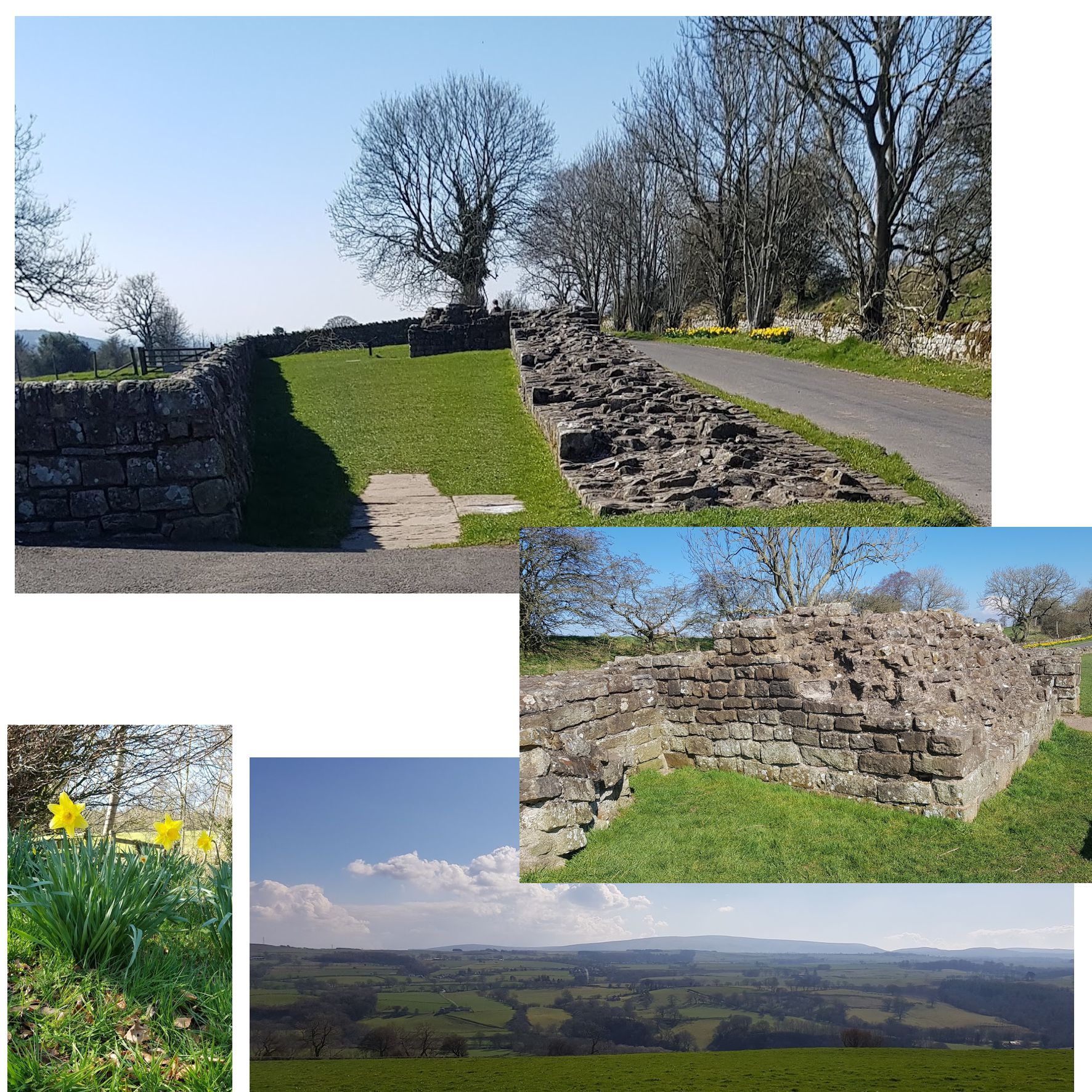
Hadrian's Wall, ok, it's in England!
When the Romans realised they couldn't hold what they were
conquering they built some walls to mark the boundry of their
empire.
There was a wooden wall between the Rhine and Danube rivers in
Germany, a bit of a ditch in North Africa and then a magnificent
stone wall 117km long and 4.5m high from coast to coast in
Britain. That's Hadrian's Wall.
Having walked on the Great Wall of China and looked out into
Mongolia, this was my next challenge to look back into the
ancient past.
As I mentioned, the Priory had stripped what they wanted from
this wall in the 12th century and I'm guessing any farmer who
needed a new cottage took his share as well. The result is
little bits of wall are scattered along the 117km trail.
Find a piece that you like, and enjoy.
As an aside, I got the BEST fish and chips I've ever had at a
small chippie in Brampton. I kid you not, and I know my
FishnChips.
City of York
I took a train Edinburgh to York
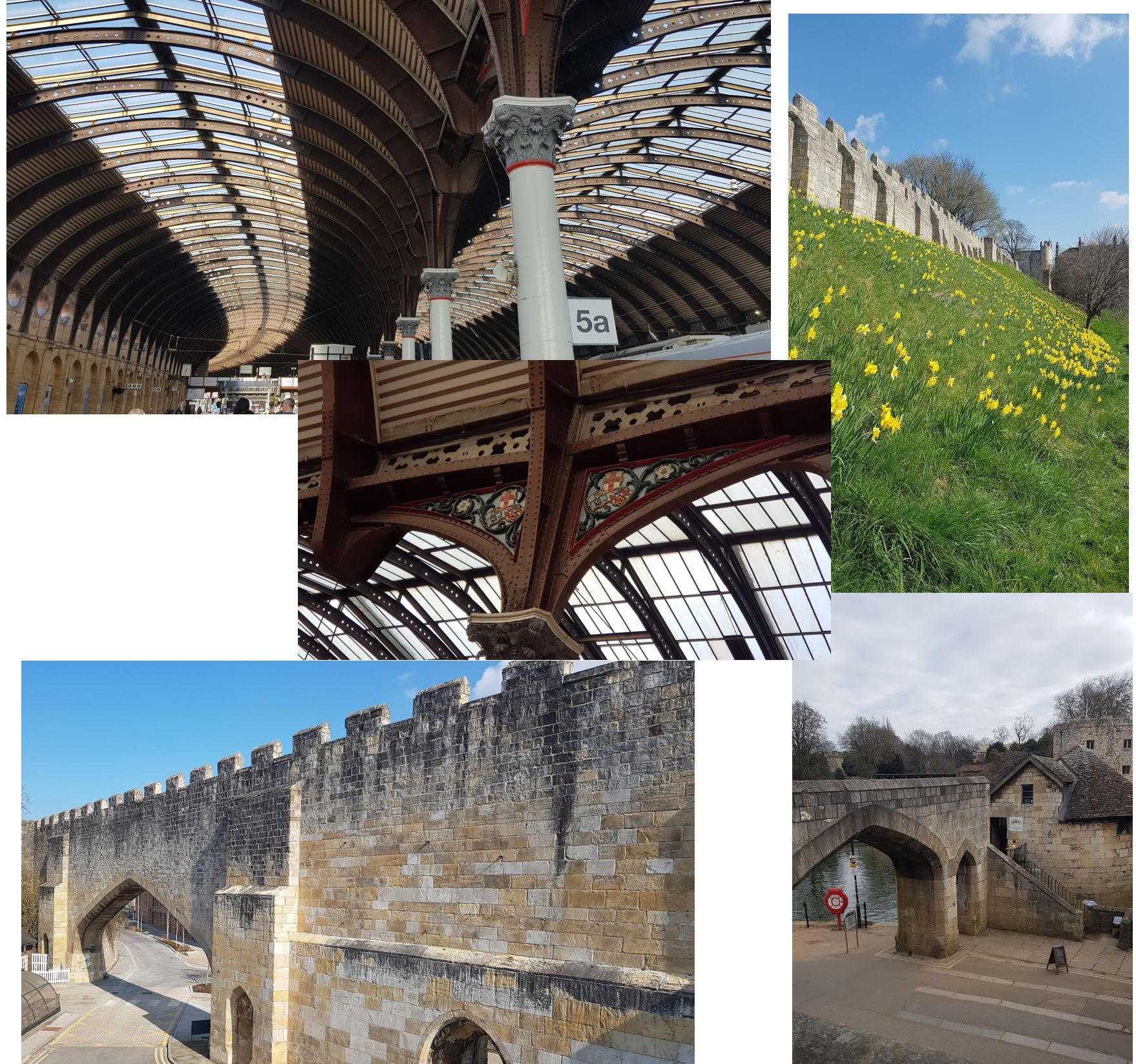
Did I mention that I love trains, well the Railway station at
York was just beaufiful. The detail in the metalwork looks
decorative but I'm betting it was to reduce the weight of those
arched beams. And the detail at the column tops must have given
the engineer/artist of the day such joy to make and see
displayed.
York is an ancient walled city full of tales of the Romans and
the Vikings. The wall surrounding the old city has been well
preserved for us to walk on and recall the turbulent history of
the place.
The Romans built the original wall around their fort on the
site, in 71AD, and they ruled from there for over three hundred
years, calling it Eboracum (Roman York).
The Roman empire declined & they left York to a succession of
ethnic groups and eventually popes and bishops ruled and
churches were built.
By the 800's, the Anglo-Saxons renamed the area Northumbria and
called York their capital.
Then along came the Vikings, beseiging York and taking the city
in 867. They called it Jorvik and ruled for a hundred years.
There wasn't one viking nation, they were 25,000 Irish, Frisian,
Danish and Norwegian Vikings. What a nightmare for their
respective leaders to control that force.
York suffered again when England descended into Civil War in
1600's. York was a Royalist city, supporting King Charles,
believing the King should not have been removed.
Three armies came to disuade them of this notion and after a 4
month siege, and losing the battle of Marston Moor in 1644, York
surrended after insisting the city and in particular the
Cathedral wouldn't be damaged - and so the Minster of York
exists today.
River City and Ancient Wall
A city with layers of history
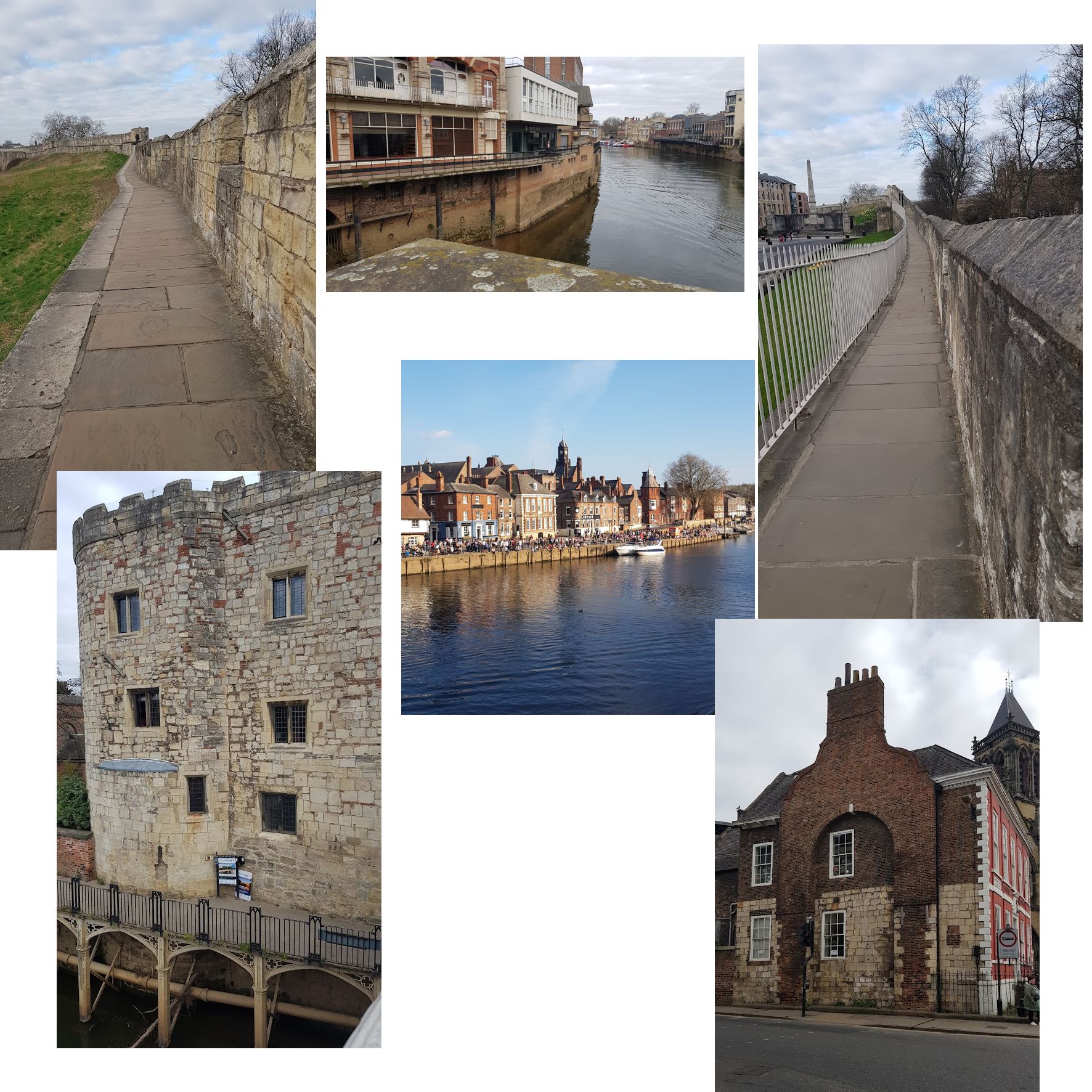
The river dominates the city and has done for over 2000 years
with each layer built upon the last.
There is a bakery on the river bank which has been in business
in the same spot for 800 years! You can imagine a boat worker
stopping to buy a bun before heading out to ply their trade.
On one side of the river is Barker Tower, it was linked to
Lendal Tower on the opposite side of the river by a great iron
chain which stretched across the water to prevent boatmen from
entering the city without paying tolls.
The Lendal water tower has its own unique history too. Used to
draw water for the townsfolk since 1300 it was some enterprising
fellows who took it over in 1677 with a 500 year lease, at 1
Peppercorn rent per year, to keep providing water - and it's
still under the original lease today.
Strolling around the old city
Walls, archways and niches filled with history
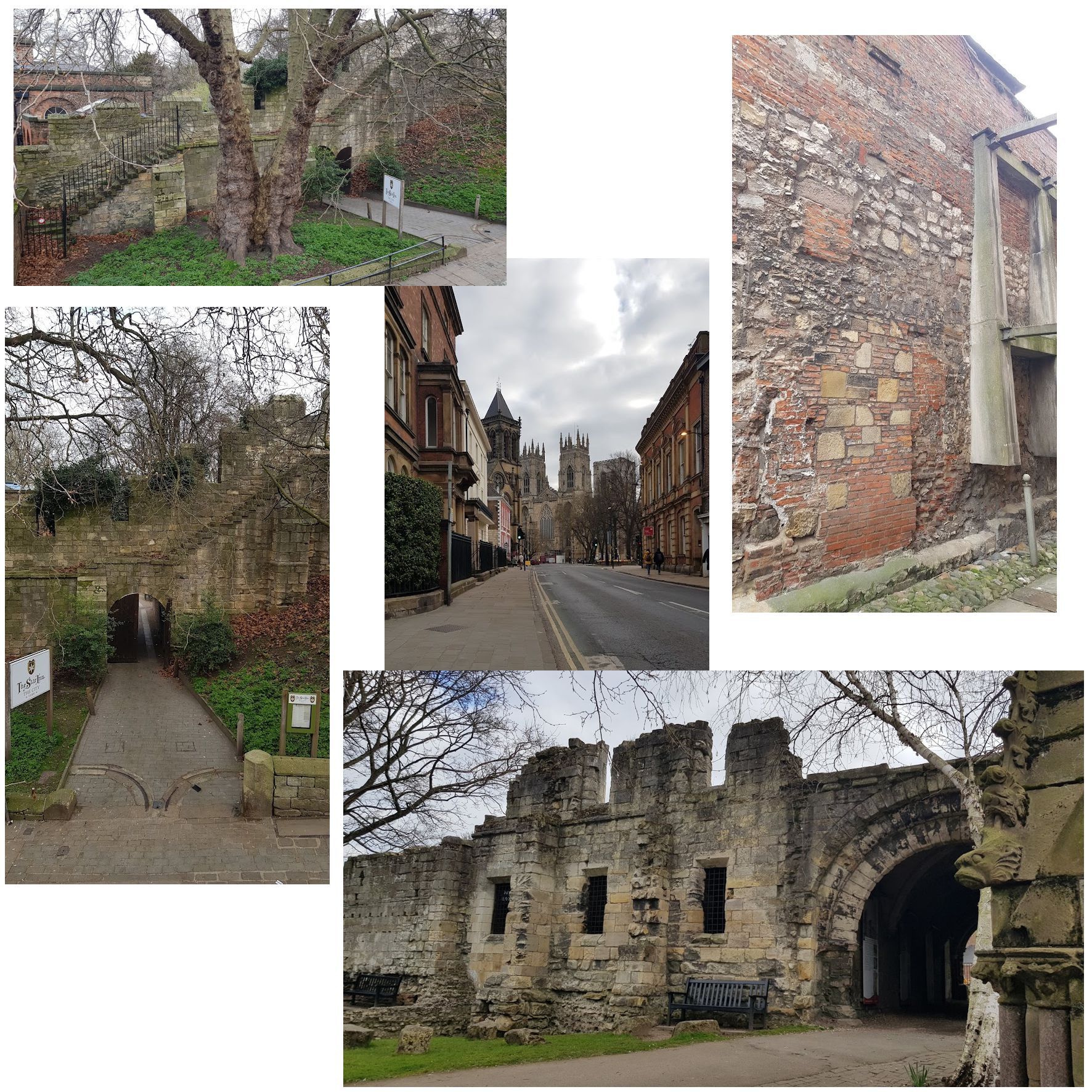
The Cathedral dominates the landscape and I was there on a
Sunday so the bells tolled for me.
I noticed it was sometimes hard to pinpoint what part of history
I was looking at. Sturdy construction was never torn down, it
was just bricked up, fortified or built upon.
Some of the ancient Roman wall is still evident, having been
built around 100AD and added to over the centuries.
Even houses and city buildings showed the signs of this eclectic
layering which I'm guessing the Brits take for granted but to an
Aussie it's something special from our shared past.
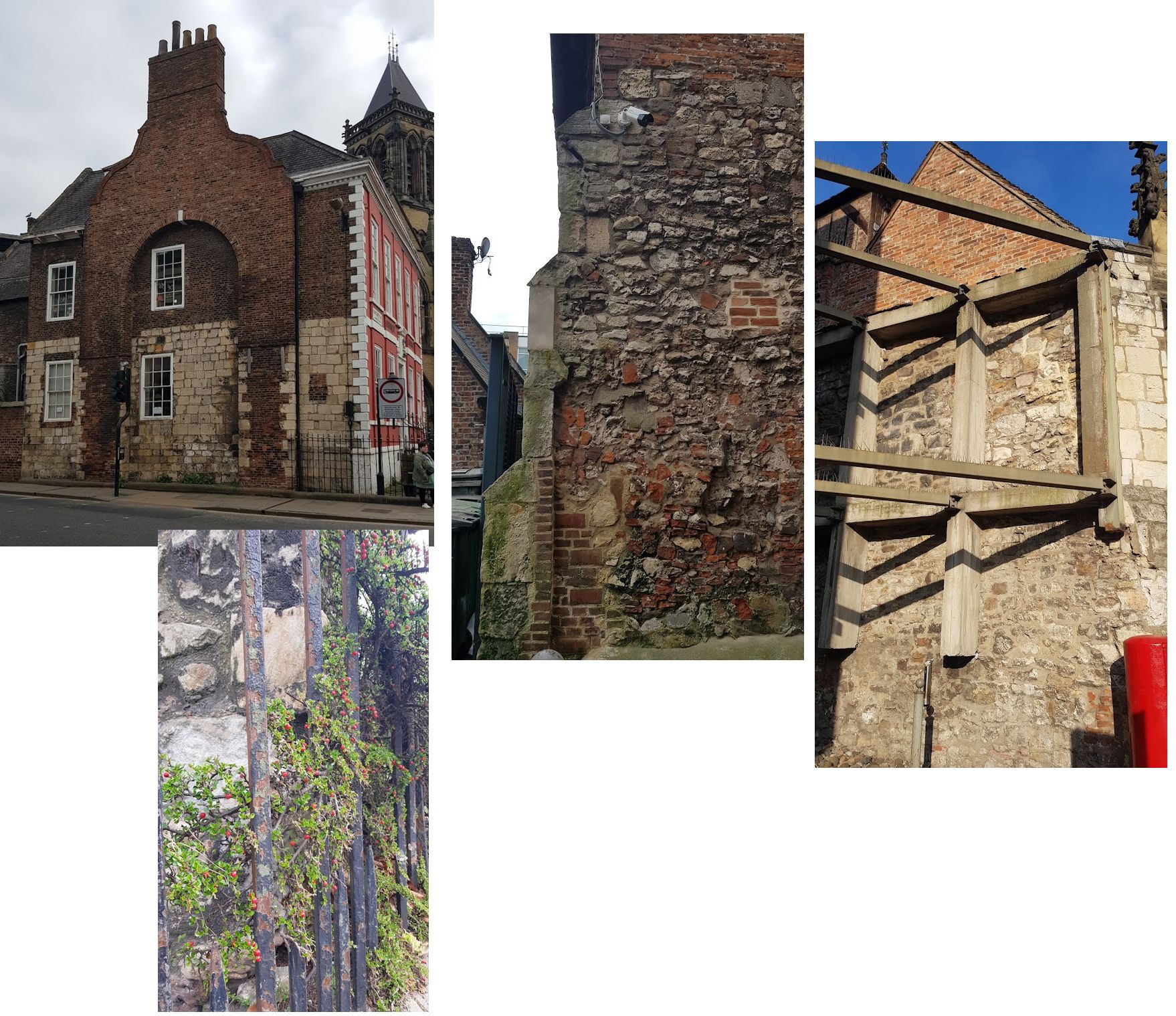
Back to London
Train York to Kings Cross
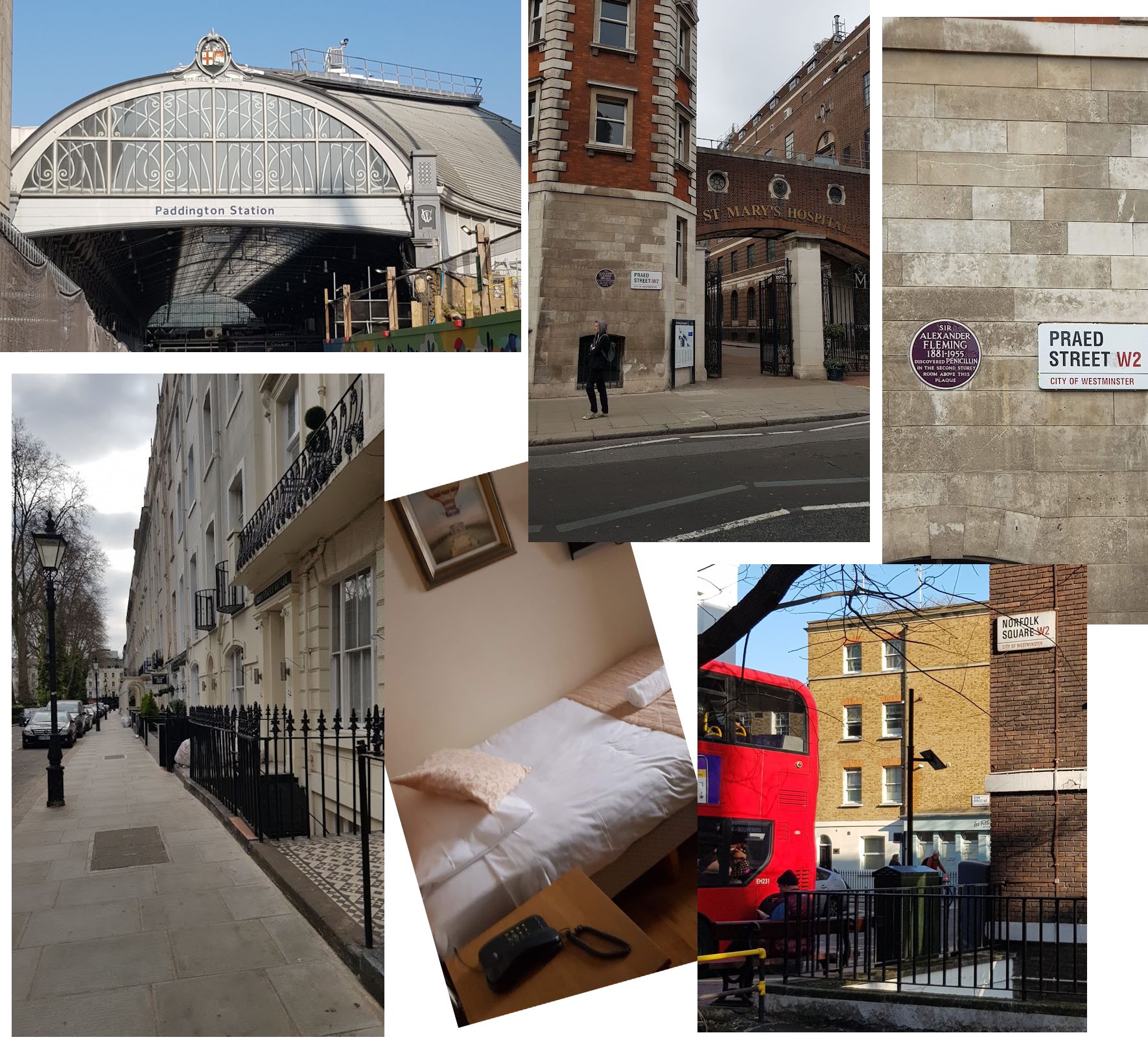
Beware taking UK trains on the weekend! They are overbooked and
you may get a tickete but no seat!
I was expecting a 2 hour trip costing $50 aussie dollars it
became a $300 marathon.
No economy tix were available so I purchased First-Class and
AFTER purchase the pop up screen advised that this gets me into
their luxury waiting room (cool)... but it does NOT provide a
reserved seat and I may have to stand for the entire journey
(extended to 4.5 hours due to railworks)... oh goodie.
The trick is, be first to jump on and look for any seats with a
green light above. The green light means 'this leg' of the
journey is not booked and you can sit here. However if the
patron who booked that seat gets on at a subsequent station, you
must give up that seat to them.
I managed ok, snagging seats all the way but it's not for the
hesitant.
The country train arrives at Kings Cross so it's a Tube train to
Paddington then a short walk to my hotel in Norfolk Square.
The street is a row of terraced houses and most are private
hotels. Very discreet and no advertising allowed.
You better know the 'house number' you're heading for.
They are relatively cheap rooms actually and I wanted a short
walk from Paddington as my base.
Beside Paddington station is St Mary's Hospital, and a small
blue plaque tells you that Alexander Fleming discovered
penicillen there.
Blue plaques abound in all the older cities and it pays to walk
and read them for interesting facts about people and places.
It's a good reason to 'walk' around London!
The Tate, Globe & St Pauls
Just wandering about
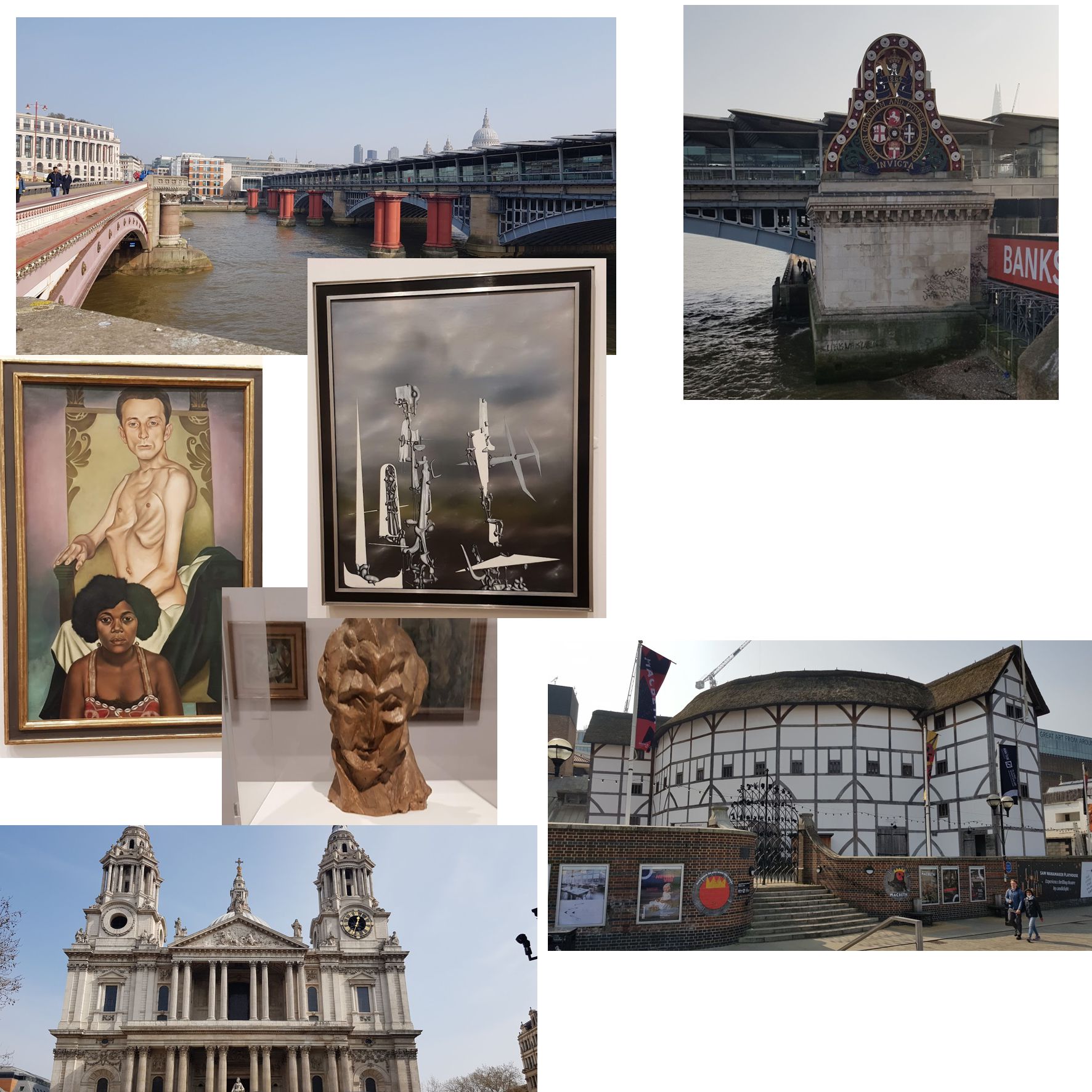
I crossed the Thames, intrigued by the old red columns still in
the water. It was originally the London Chatham and Dover Railwy
line and the large, ornate decoration is dated 1864.
Of course the rail line is gone now but still remembered.
Wandered to the Tate Modern gallery for a look at some art from
1900 onwards, then off to the Globe theatre.
I crossed the Thames again, this time over the Southwark bridge
and trundled my way to St Pauls and found some other Christopher
Wren buildings.
It was time to head home so after a couple of nights in London
it was off to Heathrow for another Covid test before I could
board my flight home.
It was 7 hours to Dubai, then 13 hours on to Brisbane, then a 5
hour drive home.
Stayed indoors and away from people in case I brought anything
home with me... all clear.
Was it worth doing, Oh yes, it was another amazing trip which
has filled my brain with memories.
Best Memories

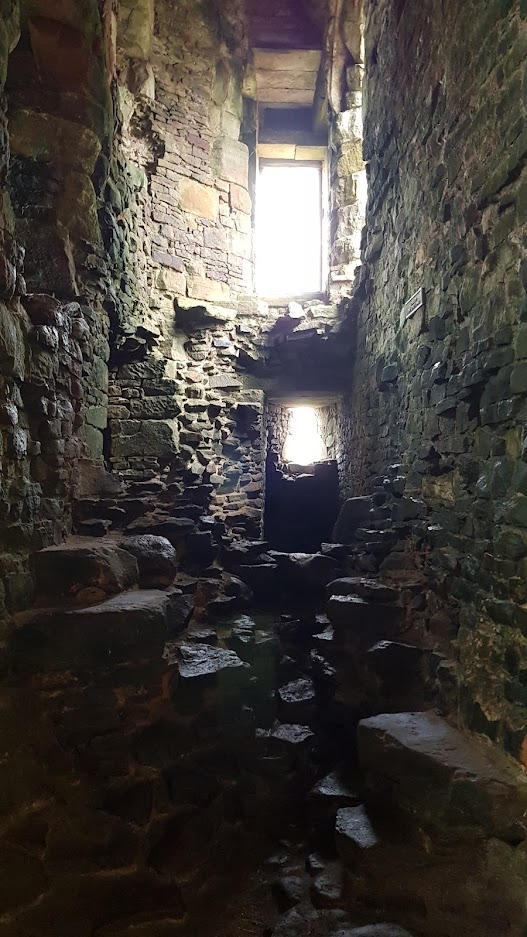
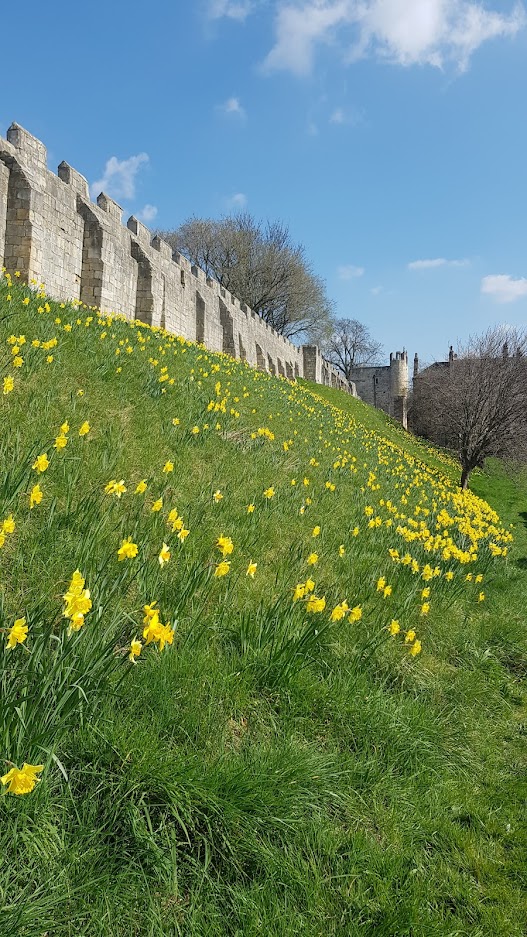
More Travels
Never stop travelling
Each of these links open webages where I share my some of my travels.
Contact Me
Please email me if I can assist with information about my projects (or if you notice a broken link).

